HEALTHY GIFTS


Tips on choosing the ideal healthy gift for a friend or loved one P. 16
HELPING REFUGEES
A young girl from Somalia who now lives in Central New York is among 1,840 individuals and 800 families who get help from RISE (Refugee & Immigrant Self-Empowerment) in Syracuse. The nonprofit helps refugees navigate the healthcare system and deal with a variety of issues. P.11

5
HAPPY
Operation Enduring Freedom in Kandahar, Afghanistan P. 4 THINGS YOU NEED TO KNOW ABOUT THE FLU, RSV
P. 22
HOIDAYS!
CNYHEALTH.COM DECEMBER 2022 • ISSUE 276 FREE
‘Heart-Healthy’ Supplements Flop in Cholesterol Study

Folks taking dietary supplements in tended to help their heart health are just wasting their money, a new clinical trial suggests.
Six supplements widely promoted as heart-healthy — fish oil, cinnamon, garlic, turmeric, plant sterols and red yeast rice — didn’t do a thing to lower “bad” low-density lipoprotein (LDL) cholesterol or improve heart health, researchers found.
“Compared to placebo, none of the supplements had a significant decrease in LDL cholesterol,” said lead researcher, physician Luke Laffin, co-director of the Cleveland Clinic’s Center for Blood Pressure Disorders.
In fact, two of the supplements made matters worse, Laffin said during a presentation on the findings in November at the American Heart Association’s annual meeting, in Chicago. The study findings were published Nov. 6 in the Journal of the American College of Cardiology.
The garlic supplement actually increased LDL cholesterol by nearly 8%, while plant sterols decreased “good” high-density lipoprotein (HDL) cholesterol levels by more than 7%, the results showed.
The clinical trial also demonstrated that statins are incredibly effective in lowering cholesterol.
A low dose of cholesterollowering rosuvastatin (Crestor) prompted, on average, a nearly 38% decrease in bad LDL cholesterol, Laffin said.
“Every participant randomized to rosuvastatin had at least an 18.2% reduction in LDL cholesterol, with half receiving over 40% reduction in LDL cholesterol,” Laffin said. “Whereas with all the supplements and placebo, you might as well flip a coin in terms of is your LDL cholesterol going to go down or is it going to go up.”
The statin also caused none of the side effects usually cited by people reluctant to take the meds.
“There were no musculoskeletal complaints, no neurological complaints, no significant elevation in liver function tests and no meaningful change in glucose as well,“ Laffin added. “So very, very safe.”
Laffin said he used the findings just last week in a conversation with a man who was taking three or four of these supplements as well as a statin.
“I said, why are you taking this? Why are you taking that? And he said, ‘well, you know, one of my buddies in the locker room told me about it,’” Laffin said. “I said, well, you don’t have to. It’s not doing anything. And he turned to his wife and said, ‘OK, I guess you were right,
honey.’”
Supplements are a nearly $50 billion industry in the United States, and about one in every five people using supplements take them to promote heart health or lower their cholesterol, Laffin said.
To see whether these supplements make any difference, Laffin and his colleagues randomly assigned about 200 people aged 40 to 75 to take either a low-dose statin, a placebo or one of the six supplements for a month.
On top of the drop in LDL cholesterol, the statin wound up causing an average 24% decrease in total cholesterol and a 19% decrease in triglycerides as well. None of the dietary supplements had any effect on these cholesterol measures.
Dietary supplements are poorly regulated in the United States, and people taking them run the risk of having a dangerous interaction with one of their prescribed medications, Laffin added.
“Cardiologists, primary care
physicians and others really need to use these results to have evidencebased discussions with patients. This is a $50 billion a year industry where our patients aren’t getting benefit,” Laffin noted.
But the Council for Responsible Nutrition, which represents supplement makers, took issue with the findings.
The study “completely misses the point of supplementation by comparing the effects of a prescription drug to dietary supplements in a short-term study. Dietary supplements are not intended to be quick fixes and their effects may not be revealed during the course of a study that only spans four weeks, particularly on a multifactorial condition like high cholesterol. This is a major — and author-acknowledged — limitation of the study,” Andrea Wong, senior vice president of Scientific and Regulatory Affairs at the council, said in a statement.
EVERYBODY BENEFITS
Along with the Blue Cross Blue Shield Association, we’re committed to reducing maternal health disparities by 50% in 5 years. That’s why we’re excited to award $1 million across 8 organizations helping combat racial and ethnic maternal health disparities in our local communities. A big congratulations to the recipients of the Member and Community Health Improvement grants.
• Child & Family Resources: Supporting expecting moms and new parents
• Mount Hope Family Center: Assisting teen moms with mental health, parenting, child development, and trauma support

• Contract Community Services: 24/7 telephonic hospital follow-up support, helping with perinatal and postpartum care
• Integrated Community Alternatives Network: Comprehensive prenatal and postpartum care, transitional housing, and community for young homeless women
• Mohawk Valley Health System: Centering pregnancy program to reduce racial disparities in preterm births
• Mothers & Babies Perinatal Network: Providing health and logistical support to new parents through baby’s first year
Page 2 • IN GOOD HEALTH – CNY’s Healthcare Newspaper • December 2022 6
A nonprofit independent licensee of the Blue Cross Blue Shield Association
When every mom receives the care she needs,
Celebrate these recipients and learn more about their work at ExcellusBCBS.com/Community





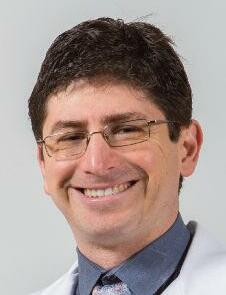
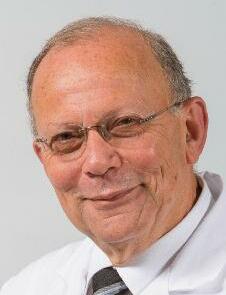




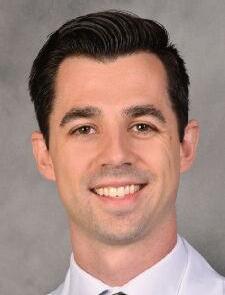
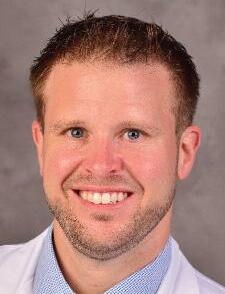


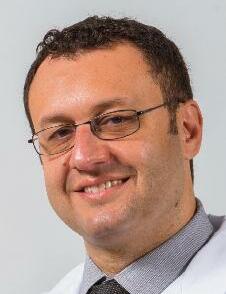



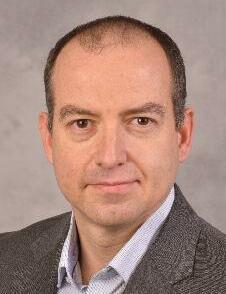

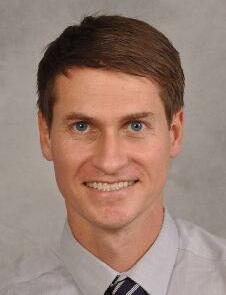

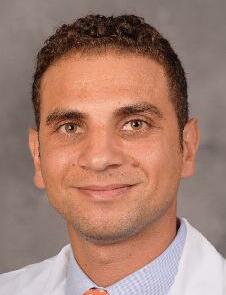

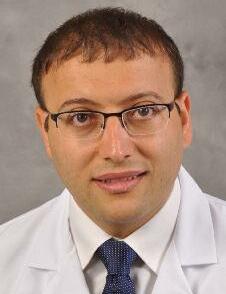
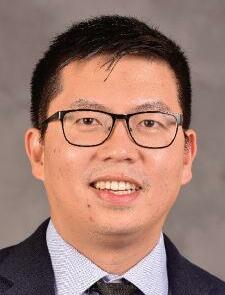


– CNY’s Healthcare Newspaper • Page 3 M E E T T H E U P STAT E U RO LO GY T E A M FO R Q A R E F E R R A L , C A L L 315.464.1500 U R O L O G Y Female and reconstruc tive urology, urinar y incontinence in women, pelv c floor treatment and neurourology MATTHEW D. MASON, MD DMITRIY NIKOLAVSKY, MD RYAN SIDEBOTTOM, DO General urology, male health, urologic oncology, enlarged prostate, k dney stones At Upstate Urology of Auburn TIMOTHY K BYLER, MD MRI fusion, male health, prostate cancer and kidney stones ZAHI N MAKHULI, MD General urology, andrology JC TRUSSELL, MD Male infer tility, erec t le dysfunc tion andrology, general urology, prosthetics, and Peyronies OLEG SHAPIRO, MD Urologic oncology and endourology robotic and laparoscopic surger y of prostate, kidney, bladder and adrenal; kidney stones SCOTT WIENER, MD Kidney Stones, Minimally Invasive Kidney Surger y, Enlarged Prostate HANAN GOLDBERG, MD, MSc Urologic Oncology; robotic and laparoscopic surger y of prostate kidney bladder, and adrenal ANTHONY J TRACEY, MD, MPH, FAAP Pediatric urology, treatment of hernias and hydroceles, robotic surger y, urinar y trac t infec tions, penile abnormalit es TOM SANFORD, MD Urologic oncology; robotic surger y of prostate, kidney, bladder NATASHA GINZBURG, MD IMAD NSOULI, MD GENNADY BRATSLAVSKY, MD Chairman Urologic oncology; robotic and laparoscopic surger y of prostate kidney bladder and adrenal STEPHEN BLAKELY, MD ELIZABETH FERRY, MD General urology ROBERT FLEISCHER, MD General urology Reconstruc tive urology; ncontinence, prosthet cs, urinar y fistula, neurogen c bladder urinar y diversion Robotic surger y General urology female and reconstruc tive urology Pediatric urology, treat ment of hernias and hydroceles, robotic surger y, urinar y trac t infec tions, penile abnormalities Incontinence, urethral stric ture d sease vesicovaginal fistula, reconstruc tive surger y, transgender care JOSEPH JACOB, MD Urologic oncology; robotic and laparoscopic surger y of prostate, kidney, bladder and adrenal MAHMOUD CHEHAB, MD General uro ogy, male health urologic oncology, enlarged prostate, kidney stones , and robotic surger y
Urolog c oncology; robot c and laparoscopic surger y of prostate, k dney, bladder and adrenal NICK LIU, MD Urologic oncology; robotic and laparoscop c surger y of prostate, kidney, bladder and adrenal EDWARD IOFFE, MD General Urology, Endourology and Laporoscopic Surger y JEFF VILLANUEVA, MD Pediatric urology, treat ment of hernias and hydroceles, robotic surger y, urinar y trac t nfec tions, penile abnormalit es
RUBEN PINKHASOV, MD, MPH
Can Sex Trigger an Asthma Attack?
Much like intense exercise, vigorous sex can trigger an asth ma attack in folks with the chronic lung disease, according to new research.
“There is a lack of cur rent literature available on the prevalence of sexual intercourse presenting as exercise-induced asthma,” said study author, physician Ariel Leung, chief in ternal medicine resident at Saint Agnes Medical Center in Fresno, California.
This could be because sex isn’t always the easiest topic to broach with your doctor.
“When sexual intercourse-in duced asthma is properly identified and treated, allergists are placed in a position where they can improve their patients’ quality of life and even their marriages,” Leung said.
When it comes to the risk of having an asthma attack, vig orous sex is akin to walking up two flights of stairs, she noted.
The same measures that keep asthma at bay during ex ercise can also help stave off a sex-induced asthma attack.
“We recommend that pa tients take their short-acting beta agonist inhaler 30 minutes prior to sexual intercourse to prevent an asthma attack,” Leung said. “Some patients might think it takes away from the romance, but nothing is more romantic than taking care of yourself and not having your partner observe an asthma attack.”
The wheezing, cough ing, shortness of breath and chest tightness that are hallmarks of an asthma attack are caused by inflammation that narrows air ways. It can’t be cured but it can be managed.
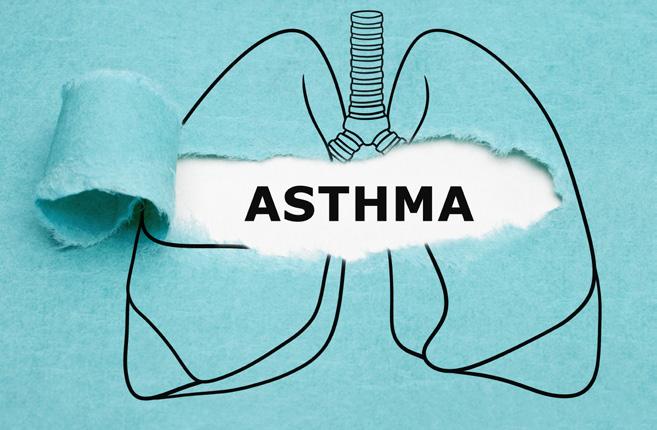
Along with taking med ication as directed, a healthy lifestyle that includes regular ex ercise and eating well can also help keep asthma symptoms at bay, Leung said.
For the new study, the researchers searched medical literature for articles on sex as a trigger for asthma attacks using keywords such as “sexual inter course,” “honeymoon asthma,” “sexual behavior and allergy,” and “allergic reaction.”
Other than a few case stud ies, they didn’t find much. They did, however, find more research on the risk of allergic reactions and asthma flares from semen or latex condoms.
The research was present ed recently at a meeting of the American College of Allergy, Asthma, and Immunology (ACAAI), in Louisville. Findings presented at medical meetings should be considered prelim inary until published in a peer-reviewed journal.
Meet Your Doctor
By Chris Motola
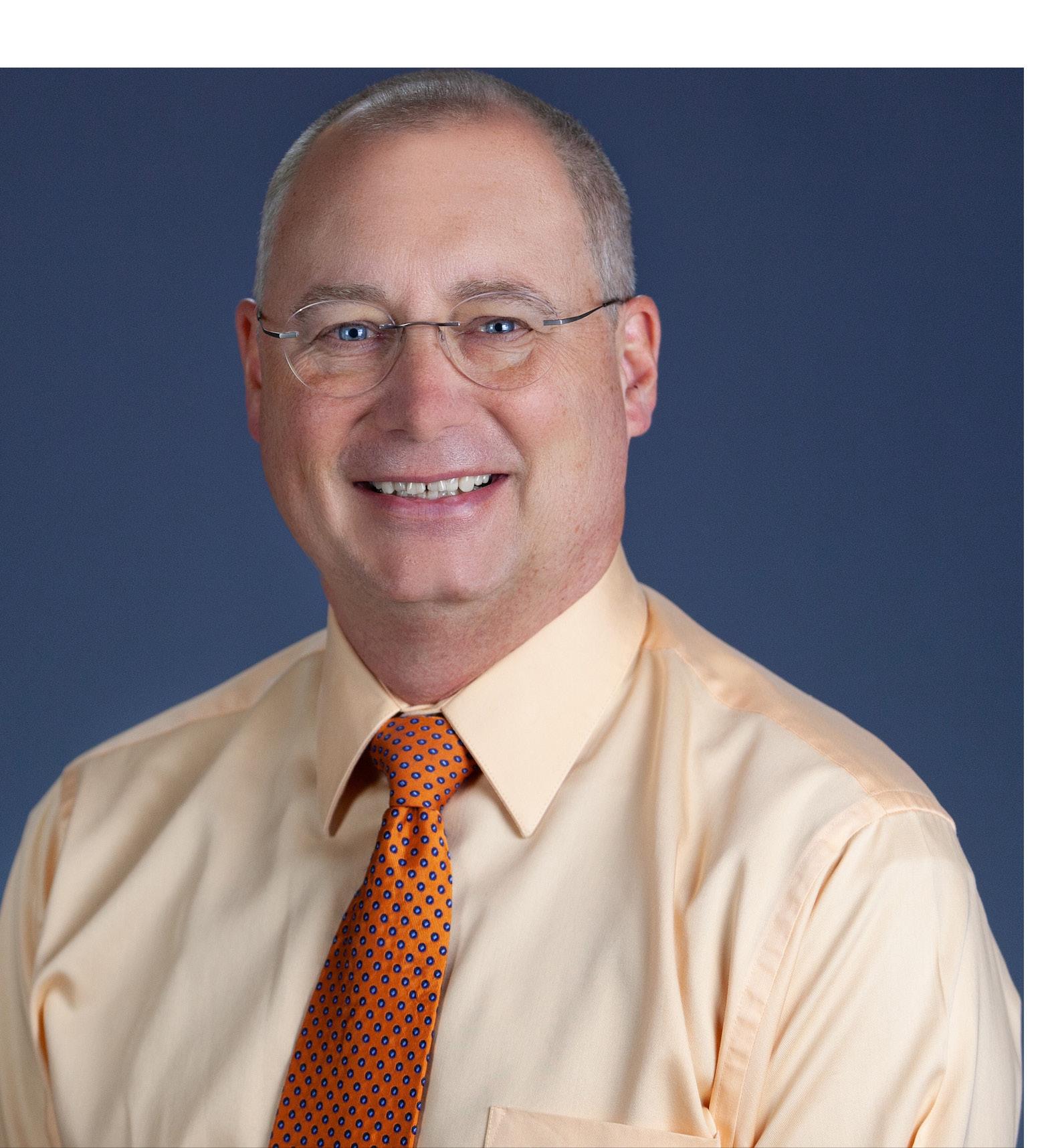
Christopher Black, M.D.
Loretto’s new medical director has roots in the Army, emergency medicine, once served as battalion surgeon in Operation Enduring Freedom in Kandahar, Afghanistan

Q: Are you currently serving as medical director at Loretto or is that forthcoming?
A: I actually started as medical director a few months ago when the previous medical director retired. I was referred for the job.
Q: What’s your medical back ground?
A: I’m trained as a family phy sician and have worked in a family practice environment for most of my career. But I’ve also worked in emergency medicine most of my career. I was in the Army for 26 years. As a family physician you see the geriatric population along with all the other groups. I hadn’t actually been thinking about long-term care medicine until I moved here to Syra cuse and Joel Amidon, the previous medical director and long-time friend of the family, contacted me and said he needed some help. So I started working less ER and more long-term care. And then he decided he was going to retire and they referred me for the job.
Q: Did you always want to take on an administrative role or did you more fall into it?
A: No, actually, I kind of fell into it. I did a lot of administrative stuff when I was in the Army and I pretty
Q: You have a lot of military expe rience. How much of that is transfer able to administration and healthcare in the civilian sector?
A: The standard of care and prac tice in military medicine is actually the same. What’s different is wearing the uniform and going where you’re told to go instead of where you want to go. And there’s the hierarchy of rank. But as far as practicing medi cine itself, not much is different.
Q: Does that include organization al procedures?
A: That’s actually not very differ ent either. They have different names for the titles. But there’s the same kind of administrative structure in the military and civilian world. One thing that’s different is the relation ships are a little different.
Q: What’s your assessment of where Loretto is at right now? What do you think needs to change?
A: Well, Loretto’s in a very good place right now. We just had a state inspection that we did very well on. There were no medical deficiencies and the deficiencies they found were all minor things like food tempera ture and some housekeeping things. Nothing really terrible. Doesn’t mean we don’t have anything to work on, but we’re in a good place. We did a
wear masks. Other than non-resi dents having to wear masks, we’re back to full activities. Residents don’t have to wear masks.
Q: Are COVID-19-related deaths down?
A: We do still have cases of COVID-19, and we have a floor for our COVID-19 unit. But the people are almost all vaccinated and aren’t dying from it like they were. It’s rare for them even have serious symp toms.
Q: I see that you’re also an adjunct assistant clinical professor at Touro College of Osteopathic Medicine. As an M.D. training D.O.s do you find there’s much of a philosophical difference to overcome?
A: The place where I do my ER work is over in Oneida and the Touro students do rotations through Oneida in all the different clinical areas. I supervise them in the ER. We don’t treat them any differently and I don’t see too many differences. The main difference is they learn how to do osteopathic manipulation therapy. But if they’re a pulmonologist, the osteopathic manipulation isn’t much part of their practice. So I don’t think there’s much of a point differentiat ing between us.
Q: What would you like your signature accomplishment as medical director to be?
A: I don’t know if it would be a signature accomplishment, but one of the things we’re constantly working on is making sure we’re getting our medical notes in for admissions, making sure there’s really good com munication between nurses and med ical staff. I tell everybody they can call me anytime for any reason if they have any concerns, and I want the rest of the medical staff to practice the same way. We’re always working on falls. Falls are a constant issue in nursing homes for two reasons. Some of the patients forget that they can’t walk and try to walk. Others are in a hurry to get to the bathroom and are willing to wait for help. We want to keep people healthy and improve them while they’re here instead of having them decline and have to go back to the hospital. So we work on ways to make sure we stay on top of that and decrease our hospitaliza tions. We have a unit called the RCU, the Restorative Care Unit, which has more RN support and the ability to do cardiovascular monitoring. So we can use that unit to help patients avoid re-hospitalization. Those are really the things I’m working on.
Lifelines
Name: Christopher Black, M.D., FAAFP
Position: Medical Director of Loretto Health & Rehabilitation
Hometown: Worcester, Massachusetts. Lives in Manlius
tors have
Education: F. Edward Herbert School of Medicine
Affiliations: Oneida Hospital
Career: Battalion Surgeon in Operation Enduring Freedom in Kandahar, Afghanistan
Organizations: American Academy of Family Physicians; American Board of Family Medicine
Family: Wife, five children
Hobbies: Watching sports; reading fiction
Page 4 • IN GOOD HEALTH – CNY’s Healthcare Newspaper • December 2022
• Acute care treatment with same-day appointments



















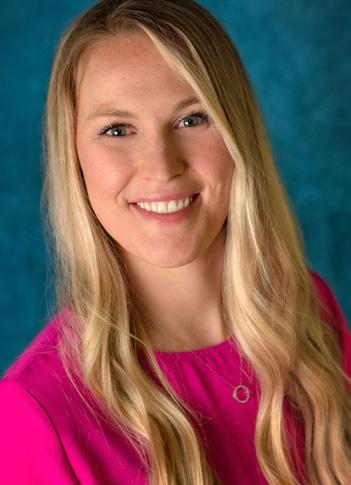




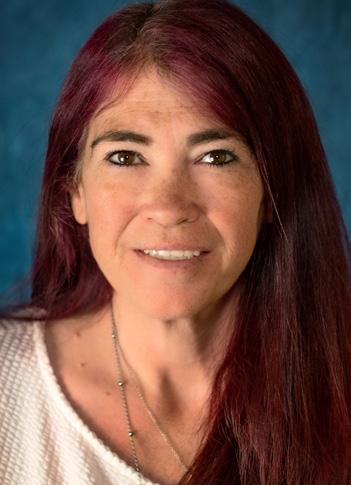

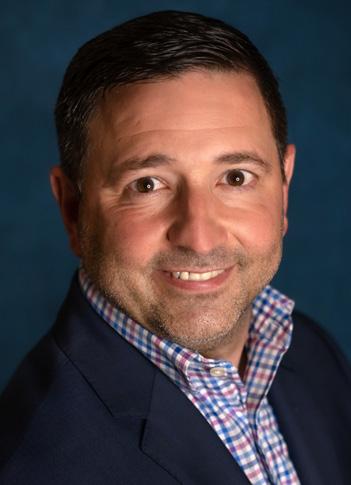








Meet our Oswego and Fulton Providers
Other
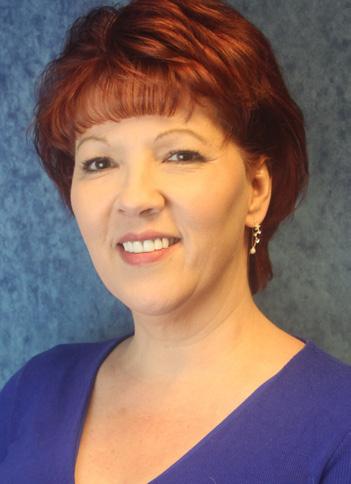
December 2022 • IN GOOD HEALTH – CNY’s Healthcare Newspaper • Page 5
is as
ConnextCare
to help!
Your health
important as ever.
is here
Say Hello to Healthy! ConnextCare offers highly qualified and accessible providers at several locations throughout Oswego County. Keep you and your family healthy, safe, and happy with convenient, compassionate and comprehensive care right in your neighborhood.
• Over 70 dedicated healthcare providers across our network
• Services include family medicine, pediatrics, dental, psychiatry, chronic condition treatment, behavioral health, and more. Say hello to the ConnextCare Oswego and Fulton team. Call today.
Oswego 10 George Street, Oswego, NY 13126 (315) 342-0880 Fulton 510 S. 4th Street, Ste. 300, Fulton, NY 13069 (315) 598-4790
Locations Pulaski, Mexico, Parish, Phoenix, Central Square
Like us on Facebook!
Beverly Aubin, FNP Family Nurse Practitioner Oswego
Alex Filipski, DO Family Practice Physician Oswego, Fulton
Katie Beebe, FNP Family Nurse Practitioner Oswego
Joy Magsino,DoloricoMD Internal Medicine Physician Oswego
Shannon Dwyer, FNP Family Nurse Practitioner Oswego
Scott VanGorder, DO Family Practice Physician Oswego
Joseph Nimeh, MD Pediatrician Oswego
Melissa Noel, DDS Dentist Fulton
Jess Overton, RDH Registered Dental Hygienist Fulton
Melissa Parkhurst, LMSW Master Social Worker Oswego, Fulton
Julie Hogle, LCSW-R Clinical Social Worker Oswego, Mexico, Pulaski
Valerie Kyser, MD Family Practice Physician Oswego
Lori Marshall, FNP Family Nurse Practitioner Fulton
Farzana Chaudhary, MD Pediatrician Fulton
Anne Filipski, MD Family Practice Physician Fulton
Marie Desravines, MD Family Practice Physician Fulton
Kourtney Darrow, NP Clinical Social Worker Fulton
Michael Miller, MD Family Practice Physician Fulton
Linda Troia, PA-C, LCSW-R Physician Assistant, Psychiatry Phoenix, Fulton, Pulaski
Patricia Bendura, DH Dental Hygienist Fulton
Anna Gofman, DDS Dentist Fulton
Diane Plumadore, NPP Oswego
www.connextcare.org
20 MOST OBESE STATES in America

HealthcareinaMinute
By George W. Chapman
Competition in Healthcare.
Why FTC Opposed to Upstate-Crouse
Merger Proposal
The Federal Trade Commission (FTC) recently opposed the Certificate of Public Advan tage (COPA) proposed by Syracuse hospitals Upstate Medical University and Crouse Health. The COPA would allow the two hospitals to merge and shield them from federal anti-trust laws. The FTC argued the proposed merger would reduce competition, raise prices, lower quality and de press wages.
The FTC said their research bears this out. I’m sure there is plenty of re search that shows without merging, several financially strapped hospitals would have closed altogether. For rural and even suburban commu nities, a closure results in NO care, NO wages, NO emergency room and longer drives for care.
Ironically, rather than saving a distressed hospital via merger, an aggressive, predatory hospital could just let it fail, resulting in less compe tition. Upstate and Crouse are liter ally across the street from each other, so no outlying community would suffer if Crouse closed.
However, the overall Central New York community needs the beds. Upstate is chock full. So why would the FTC oppose the COPA/ merger?
If Crouse were to close, Upstate would most likely purchase the assets and hire back the staff. The quality of care would at least be maintained, if not improved. There is still local competition with Trinity Health, which is part of a 95-hospital conglomerate. The FTC fears prices will rise. Wrong. Medicare and Med

Virtual Care Satisfaction
A Harris poll of 5,000 adults found 94% of those who used virtual
icaid set what they pay prospectively. There is no negotiating. There are enough commercial insurers in town to keep the newly merged entity from flexing their market share. Rais ing “prices” has virtually no impact on hospital revenue when 90% of their revenues are controlled.
In the end, Upstate and Crouse will merge.
To put this potential merger into perspective, Louisiana-based LCMC is planning to purchase three Tu lane University hospitals (currently owned by HCA Healthcare). The local nurse unions are opposing the mega merger which would reduce competition to two huge systems.






When it comes to “competition,” the FTC might want to focus LESS on hospitals merging just to survive and MORE on the lack of choice in most markets when it comes to commer cial insurance options. 80% of all U.S. markets range from NO competition to LOW competition among commer cial carriers. Just five carriers control more than 70% of the commercial insurance market, which includes employer, individual and Advan tage plans. They are: United Health, which controls 28% of the market with $5.3 billion profit in third quar ter 2022; Humana, 19%; Aetna/CVS Health, 11% with revenues of $238.6 billion third quarter; Kaiser Perma nente, 7%; and Anthem/Elevance, 6%. And when insurers dominate a market, they can unilaterally raise prices for their commercial products. (In New York, insurer commercial premium increases are reviewed and approved by the NYSDOH.)
primary care (telehealth) were satis fied with their experience and 79% felt they had a greater role in manag ing their health. The poll found that
about half of the respondents weren’t sure what the term “virtual primary care” meant, indicating providers and insurers need to do a better job of communicating the service. How ever, other surveys have revealed telehealth usage declined from 78% in 2021 to 45% in 2022 among respon dents. This had more to do with per sonal preference than dissatisfaction. Younger adults were more likely to seek care from non-traditional pro viders, like retail clinics, showing less loyalty to specific providers. Younger adults, feeling more impacted by the pandemic, were more likely to seek virtual mental health services.
Misleading Advantage Plan Marketing
This time of the year, seniors are bombarded with cold calls, texts, emails and mailers from agents and brokers hawking their Advantage plan. And all of us are subject to the ubiquitous TV ads. (Thankfully, open enrollment ends in December.) Ten states have reported to CMS a surge in consumer complaints about ag gressive, misleading, confusing and even fraudulent marketing. Seniors have been duped into changing plans after being told their provider may no longer participate in their cur rent plan or they will be eligible for an increase in their Social Security check. Some marketing materials are made to look like official government documents. Consequentially, a Senate committee is considering stricter marketing rules including prior ap proval of all TV ads, (can they do that for political ads, please?), banning cold calls and holding insurance companies liable for the actions of their brokers and agents. Half of all Medicare members belong to an Advantage plan.
Lobbying Surges
Over the past 20 years, industry stakeholders increased their lobbying expenses 70% from $358 million in 2000 to $714 million in 2020. In 2020
the breakdown among the four major stakeholders was drug manufactur ers $308m, providers $287m, insur ance/payers $81m and other firms (consulting, policy) $35m. As usual, drug manufactures lead the pack. They have the largest profits and have most to lose. The last thing they want is to be subjected to congres sional price controls like physicians and hospitals. Providers are lobbying to virtually stay afloat. Hundreds of hospitals have closed in the past 20 years and most surviving hospitals are operating in the red or with razor thin operating margins. Physicians are facing a 4.4% CUT in their Medi care payments next year.
If Congress is Flipped
As of this writing, Congress is controlled by the Democrats. Odds were Republicans would take the House election day. Assuming they did, what would change in healthcare? Experts see four areas of concern. First, they expect an oversight committee to scrutinize the implementation of the Inflation Reduction Act which finally gives Medicare the right to negotiate drug prices with manufacturers. Second, Congress could limit the expansion of Medicaid and related premium subsidies under the Affordable Care Act. Third, Congress could discontin ue telehealth flexibility for Medicare recipients. Fourth, and most contro versial, disrupting women’s repro ductive healthcare.
W. Chapman is a healthcare busi ness consultant who works exclusively with physicians, hos pitals and healthcare organizations. He op erates GW Chapman Consulting based in Syracuse. Email him at gwc@gwchapman consulting.com.

Page 6 • IN GOOD HEALTH – CNY’s Healthcare Newspaper • December 2022
George
1. West Virginia 2. Mississippi 3. Kentucky 4. Arkansas 5. Alabama 6. Tennessee 7. Louisiana 8. Delaware 9. Oklahoma 10. South Carolina 11. Georgia 12. Texas 13. Ohio 14. Missouri 15. North Carolina 16. Iowa 17. Kansas 18. Michigan 19. Indiana 20. Virginia
The personal-finance website WalletHub in November released its report on 2022’s Most Overweight & Obese States in America, as well as accompanying videos and expert commentary. To determine which states contribute the most to America’s overweight and obesity problem, WalletHub compared the 50 states and the District of Columbia across 31 key metrics. They range from the share of overweight and obese population to sugary-beverage consumption among adolescents to obesityrelated health care costs.
Half of Dentists Say Patients Are Coming to Appointments While High

More and more nervous pa tients are showing up stoned for dental appointments, often forcing dentists to postpone treatment until the patient sobers up, new survey data shows.
As more states are legaliz ing marijuana, more than half of dentists (52%) report seeing patients high on weed or other drugs, a new survey from the American Dental Association (ADA) found.
“In my practice, I’m seeing more patients who are openly dis closing marijuana use,” said ADA spokeswoman Tricia Quartey, a dentist.

Many use marijuana to relax before an appointment, but being high can limit the care dentists can give and result in procedures being postponed, Quartey added.
“When somebody is under the influence, oftentimes we need to give more anesthesia or we may have difficulty with anesthesia,” Quartey said. “If you can’t get somebody fully numb, it’s not exactly creating the same experience and lessening the anxiety. You have to stop a visit
and send somebody home.”

The survey found 56% of dentists did just that, stating that they limit treatment while patients are high.
The data were gleaned from two online surveys, which included over 550 dentists across the United States and just over 1,000 patients. Among patients, the second survey found that 39% said they used marijuana. In addition, 25% of patients said they vaped, and of those respondents, 51% vaped marijuana.
Quartey said dentists should ask their patients if they use marijuana, and patients should discuss their marijuana use with their dentist. The ADA survey found that 67% of pa tients are comfortable talking to their dentist about marijuana.

“The advice to patients is to not use marijuana prior to an appoint ment,” Quartey said. “You think it’s going to reduce anxiety and it’s not. But if you do, inform your dentist so they can be fully aware of what is going on at the appointment. You should also be aware that the dentist oftentimes cancels the appointment.”
ONONDAGA, OSWEGO, CAYUGA & MADISON COUNTIES
A monthly newspaper published by Local News, Inc. 33,500 copies distributed throughout more than 1,000 high-traffic locations, including all Wegmans stores.


In Good Health is published 12 times a year by Local News, Inc. © 2022 Local News, Inc. All rights reserved. P.O. Box 276, Oswego, NY 13126
Phone: 315-342-1182 • Fax: 315-342-7776 • Email: editor@cnyhealth.com
: Ahme Cruz
No material may be reproduced in whole or in part from this publication without the express written permission of the publisher. The information in this publication is intended to complement—not to take the place of—the recommendations of your health provider. Consult your physician before making major changes in your lifestyle or health care regimen.
December 2022 • IN GOOD HEALTH – CNY’s Healthcare Newspaper • Page 7
•
•
Editor & Publisher: Wagner Dotto
•
Associate
Editor:
Steve Yablonski
•
Writers: Deborah J. Sergeant, Jim Miller, Gwenn Voelckers, Anne Palumbo, Chris Motola, Melissa Stefanec, Eva Briggs (MD), Mary Beth Roach, Norah Machia, Ernst Lamothe Jr., Trisha Wameling
Advertising: Amy Gagliano, Cassandra Lawson Layout & Design: Angel Campos-Toro
Secretary
Call me to set up in-person or over the phone consultation and let me help you, at no cost!!
• ballardassoc@gmail.com AARON BALLARD President & Owner, Ballard & Associates, LLC. Happy with your Prescription Coverage? Happy with your copays? Do you have extra $$$ set aside for burial expenses? Do you know if you qualify for help paying for your prescriptions? Aaron Ballard is a licensed Insurance broker representing all the top Medicare carriers in CNY & beyond! 315-374-1783 Insurance Made Simple Turning 65 or just confused about Medicare? We do not offer every plan available in your area. Any information we provide is limited to those plans we do offer in your area. Please contact Medicare.gov or 1-800-MEDICARE to get information on all of your options. Vascular Disorders Reconstruction Bra & Prosthesis New Beginnings Mari with her assistant, Sophy! Mari Curry Certified Mastectomy Fitter Medical Compression Specialist 3232 Erie Blvd., Dewitt NY 13214 315.472.0707 • www.moprocorp.com MoPro Mobility, Healthcare Products and Footwear In Stock: Large variety of compression stockings & garments at
www.ballardassoc.com
‘Tis the Season: Thoughtful Gift Ideas for Those Who Live Alone
This column is for all of you who have friends or family members who live alone.

In December, most folks look forward to joyous holiday time filled with family gatherings, laughter, hugs and gift giving.
But not everyone is filled with jubilant anticipation. Those on their own, who may be missing loved ones, often experience feelings of loneliness and anxiety. The holiday blues emerge, which can dampen their holiday spirits.
What can you do to add a little “merry” to the holidays for those who live alone? You can give the gift of time together — probably the most welcome and cherished gift of all.
Below, I’ve compiled a list of gift ideas for you, beginning with gift suggestions that foster togetherness. These suggestions and those that follow are all designed to put a smile on the face of someone who lives alone.
FOR TOGETHERNESS
• A “Be my guest!” gift certificate and tickets to a movie, concert, or theater production. Insist on doing the driving.
• A bottle of Champagne and invitation to join you (and perhaps
a few friends) for a New Year’s Eve get-together. This can be a challenging night for those who are newly divorced or widowed.
Years ago, after my divorce, I popped the cork with my sister and her husband. I was deeply grateful for their invitation to spend the evening together. It got my New Year off to a great start!
• Gift of Time coupons for time together doing things you think your friend or family member would enjoy. Here are a few ideas:
– Baking cookies together
– Go bowling – Lunch and shoe shopping – A sporting event or fishing adventure
– An afternoon of antiquing – A walk, hike, or bike ride
– Hands-on help with organizing a closet
– A visit to a local botanical garden
– Drinks at a nearby “watering hole” with permission to complain for hours. Ha!
My sister gave me that final coupon last Christmas. It was one of my favorites.
These gifts of time together are precious. Be creative. Keep it personal. And know that the gift of your company will be deeply appreciated and remembered long
after the holidays are behind us.
FOR PERSONAL ENJOYMENT AND PAMPERING
• A subscription to online lessons, classes, workshops, and tutorials. Do you have a single friend who aspires to play the piano? Check out online music lessons. A divorced sister who eats supper directly from the take-out container? Consider a cooking class. Or a widowed mother interested in life-long learning? A continuing education course might delight her. There are so many possibilities!
• An opportunity to be “treated like royalty.” How many of your friends who live alone indulge themselves in luxury services? My guess is not many, if they’re like me. But that’s what makes this the perfect gift!
Why not surprise her with a spa certificate for a massage, facial, manicure, or pedicure? Or make his day with a certificate for a gentleman’s facial or deep tissue or sports massage?
• For women who live alone – fresh flowers delivered. Do you know a single woman who lives by herself? When’s the last time she got flowers? It’s probably been years . . . don’t I know it.
Consider sending a bouquet of roses or tulips red for love, yellow for friendship, pink for appreciation, and white for sympathy.
• And speaking of deliveries, check out Gift-of-the-Month clubs. Coming home alone at any time of year can feel a little empty, but it can really feel lonely during the winter months. Discovering a package on the doorstep can change everything.
Go online and check out gourmet gifts and food clubs. You won’t believe the variety of delicious items that can be delivered on a monthly basis: chocolates, hot sauce, cheese, tea, cigars, wine, beer, pastas, olive oil, cookies, popcorn, pancakes, or entire meals. I love this idea so much
I might treat myself.
FOR SAFETY
• An AAA membership. I don’t leave home without it. A flat tire, an empty tank, a lost key I’ve been there. AAA has saved the day!
• Handy tools and supplies for emergencies or life’s unexpected moments. Consider a compact “nobattery” wind-up flashlight-radio with a hand crank. Or a Johnson & Johnson All-Purpose First Aid Kit.
• How about a Swiss Army knife, complete with a screwdriver, scissors, toothpick, and tweezers? It even comes with a nail file and corkscrew.
• A front-entrance motion sensor light that will illuminate your front porch after the sun goes down. This energy-saving device will light the way for visitors (or a new suitor?) and may also scare off intruders and critters. Those who live alone will appreciate the peace of mind.
• A gift certificate for car washes. While not necessarily a “safety gift,” I always feel better when my car is clean (and that can’t help but make me safer on the road). Who doesn’t enjoy a clean, sparkling car? Choose a car wash near your recipient’s home or work place.
FOR INSPIRATION
• A donation to a good cause. Making a charitable contribution in someone’s name is a gift you can both feel good about. Think about your friend or family member who lives alone. What do they care about? Choose an organization that supports his or her values.
• A subscription to “In Good Health” or “55 Plus” produced by editor and publisher Wagner Dotto. Both periodicals are filled with inspirational articles and trusted health information. Consider a gift subscription for someone you love. Chances are good your holidays and theirs will be the healthier and happier for it.
Infant Head-Shaping Pillows Are Useless and Dangerous to Baby, FDA Warns

Infant head-shaping pillows are not approved by the U.S. Food and Drug Administration and should not be used, the agency warned early November.
The pillows can create an un safe sleep environment for infants, potentially contributing to the risk of suffocation and death.
Marketed as changing an infant’s head shape or symmetry or claiming to treat other medical conditions, they have no demonstrated benefit, the agency said in a news release.
“If you own an infant head-shap ing pillow, throw it away; do not donate or give it to anyone else,”
the alert said. “Be aware that infant head shaping pillows are not safe or effective for preventing or treating flat head syndrome or other medical conditions.”
In most cases, flat head syn drome will go away on its own as an infant grows up, the FDA said. It is not painful and it does not cause any developmental concerns. Using a head-shaping pillow may delay necessary medical evaluations and mask something more serious, such as craniosynostosis, where a develop ing infant’s skull bones join together too early.
The U.S. National Institutes of
Health and the American Acade my of Pediatrics both recommend infants sleep on their backs in a bare crib on a flat — not inclined — surface without pillows, toys, soft objects or loose bedding.
These recommendations are intended to help reduce the risk of Sudden Unexpected Infant Death (SUID), a category that includes Sud den Infant Death Syndrome (SIDS).
Health care providers should dis courage the use of infant head-shap ing pillows and educate their patients about the risks, the FDA added.
Infant head-shaping pillows are typically small, with an indent or hole in the center designed to cradle the back of an infant’s head while the infant lays face up.
Some do not have the indent and are rectangular-shaped.
The FDA has cleared caps, hel mets or head bands to improve head symmetry or shape in infants and toddlers from 3 months to 18 months of age.
Some devices are also intended for infants from 3 to 18 months of age whose head shape has been surgi cally corrected, but who still have a moderate-to-severe flat head, the FDA said.
The agency said it has communi cated its concerns about promotional materials to companies that make these pillows and will continue to monitor claims for these products.
Any questions can be sent by email to the Division of Industry and Consumer Education (DICE) at dice@ fda.hhs.gov or asked by calling 800638-2041 or 301-796-7100.
Page 8 • IN GOOD HEALTH – CNY’s Healthcare Newspaper • December 2022
Live Alone & Thrive
Practical tips, advice and hope for those who live alone
By Gwenn Voelckers
This Is Nursing.
This is your next step.
At St. Joseph’s Health, we know that nurses are exceptional people. Whether your path keeps you close to patients at the bedside or steers you to leadership, education or expansion of your skill set, we provide the collaboration, resources and support to guide and grow your career.
We’re looking for passionate, driven nurses to join our Magnet® designated team. To become part of the team providing Central New York with a higher level of care, apply now.

December 2022 • IN GOOD HEALTH – CNY’s Healthcare Newspaper • Page 9 A HIGHER LEVEL OF CARE | jobs.sjhsyr.org © 2022 St. Joseph’s Health. © 2022 Trinity Health. All rights reserved.
SJH10290_NR_In_Good_Health_9.75x13.75.indd 1 9/16/22 4:12 PM
Q & A
with Dan Sieburg
CEO of the Rescue Mission Alliance in Syracuse explains how the nonprofit helps about 10,000 people a year with food and shelter, talks about new housing projects for 2023

Q: Can you explain the work of the Rescue Mission, including some of its programs and initiatives?
A: We are a 135-year-old local community-based nonprofit orga nization, based in Syracuse, with some programming in Binghamton and Auburn, as well. Our focus is on
helping hungry, housing-unstable individuals, people living on the streets, as well as homeless families, women, children and single men.
Q: How many people do you esti mate that you serve in a year?
A: In a year, we serve between
9,000 and 10,000 people.
Q: What’s your definition of serve — is it meals? Is it shelters?
A: It could be meals, shelter, housing units that we own and oper ate, employment services, clothing, coats, shoes, socks — whatever some body might be in need of.
Q: Over the past year, has this number been on the increase, and if so, why do you think that is?
A: I think the numbers have been on the increase for sure in the last year. The additional supports and resources throughout the pandemic that give people maybe more sustain ability — those dollars and checks have gone away. I think people are struggling to make ends meet. And then the rising prices of housing in upstate and Central New York — it all creates a difficult pattern and position for a lot of people that are already living on the margins of soci ety. Luckily, we’ve been able to con tinue to meet the needs as it grows.
Q: What are your needs for volun teers over the holidays?
A: Our biggest one-day or twoday undertakings are on Thanksgiv ing Day and Christmas Day. We serve more than 2,000 meals throughout the community. There’s about 300 to 400 more that get served on our cam pus, but there’s a lot of homebound individuals or elderly. Meals on Wheels isn’t operating on those two holidays. So, we recruit hundreds of volunteers to come to the Mission, we give them an assignment with packaged meals ready to go. Then people go all over Onondaga Coun ty, dropping off meals before they sit down for their Thanksgiving or Christmas meal. We still need volun teers to help deliver meals, but then also, as we get through the holidays, it would be great to have volunteers show up in January and February. We always need help preparing meals at our food service center, as well as volunteering in different ways, whether it’s in our clothing outreach program downtown.
Q: What is the best way for inter ested people to volunteer?
A: The best way is to go to rescuemissionalliance.org and click the volunteer button. Then there’s a prompt where you have to fill out your information. Once you get in our system, we can get you sched uled. There’s a way where you can click on what days and times work
best for you.
Q: What do you see as the major challenges that the Rescue Mission faces?
A: I think the biggest challenge that we see right now; and it’s, I think, only going to grow, is the need for truly low-income, quality afford able housing. Exciting things are happening in Syracuse, Onondaga County, and it sounds like new jobs are being created. The housing that’s going to be created for those new jobs are going to be single-family homes or higher-end homes. I think the need for the right kind of housing for our clients that we serve is not be ing developed currently, and there’s no real incentive to develop that kind of housing.
Q: What do you consider some of the strides that the Rescue Mission has made in the last year?
A: I think we have refocused our organization to truly become a housing developer over the next few years. As we look at the climate for the housing need and what our clients need for sustainability and to really achieve their higher level of independence, we need to be the ones to start to create that kind of housing. We’ve started to lay plans and work out a strategy where over the next 15 years, our goal is to develop 150 units of housing that we create, we maintain, we fully staff, and our clients can have a safe space that’s quality, that’s dignified. We also know that some clients are little rougher on facilities, and they might not fit into your typical apartment complex. We are going to work to create those kinds of spaces, to make people feel like they’ve got a home and it feels like a safe place for them to get back on track.
Q: As we prepare for 2023, what would you like to accomplish this coming year?
A: This coming year we have started the process to put together layers of funding to start to create some of this housing and start to create the building facilities. It’s go ing to be a multi-year, multi-funding approach. There’s no quick way to create this housing, especially with everybody else trying to build hous ing for different uses in our commu nity. We’ve got the vision for what’s needed. Now, we’re going to develop and really home in on our strategy, as well as start to put together some of the funding to make it a reality.
Page 10 • IN GOOD HEALTH – CNY’s Healthcare Newspaper • December 2022
‘RISE-ing’ to Help Refugees and Immigrants Find Healthcare
By Norah Machia
It’s challenging enough for refugees and immigrants to access healthcare in the United States if they don’t speak the English language. What makes it even more difficult are the cultural differences that many face when they settle in this country.
In Onondaga County, a program has been breaking down those barriers and making it possible for refugees and immigrants to successfully navigate the system and obtain much-needed health care services for themselves and their families.
The care management program is one of several services offered through the RISE (Refugee & Immigrant Self-Empowerment) agency in Syracuse. The agency’s mission is to advocate and promote self-sufficiency in the areas of employment, education, social support and healthcare.
Refugees and immigrants from numerous countries, including Somalia, Nepal, Bhutan, Congo, Tanzania, Burundi, Afghanistan, India, Sudan, Myanmar, Iran and Iraq, along with many others, are served by the agency. Approximately 90% of the RISE staff is former refugees and immigrants themselves. Collectively, they speak more than 29 languages.
“We’re like a nation within a nation,” said RISE director of care management Zeeshan James. “It’s refugees and immigrants helping each other.”
That’s been the key to success in addressing the physical and behavioral healthcare needs of clients, he said.
“It means a lot to them to have someone who not only speaks their language, but understands their culture,” said James, a former banker from Pakistan.
Since the staff has a unique understanding of the population they serve, “everyone who works at the agency goes the extra mile to help,” he said. “It’s very rewarding work for them.”
The RISE Care Management Program focuses on coordinating healthcare services for those with two or more chronic conditions, such as asthma, heart disease, diabetes, obesity and/or mental health conditions, such as depression or anxiety and substance abuse disorders. Those who have specific conditions, such as HIV or a serious mental health illness, also qualify for help based on that one diagnosis.
The program serves refugees and immigrants receiving Medicaid or Medicare coverage and who have experienced other challenges such as inadequate housing, a lack of access to food or transportation, difficulty
in adhering to treatments and medications and/or a lack of social or family support.
“It’s more than just being able to speak a language,” James said.
It’s also about understanding how cultural difference contributes to the challenges faced by many refugees and immigrants. For those who are newly arrived in the country, the healthcare system often appears to be a very complex and confusing one.
In fact, one of the first things they teach clients is not to call 911 unless it’s a true emergency, he explained. For many, they do not realize being taken by ambulance and receiving care at a hospital’s emergency department will result in a costly medical bill.
“We teach them how to get primary care to address their chronic diseases,” James said. “We walk them through the process and eventually they graduate from the program. Although they can re-enroll in the future if necessary.”
The agency helps to connect clients with primary care providers in the community who can monitor their health and coordinate health home services, resulting in unnecessary trips to the hospital. Appointments with primary care providers can be set up, transportation provided and an interpreter offered to accompany the patient to the visit.
The staff may also connect clients to nearby pharmacies for
Coordination Network and Health Home Upstate New York, both in Syracuse.
They also work with managed care organizations, including Molina, Fidelis and United Health Care.
“We have helped many people develop a better understanding of the medical system in this country,” and make health care more accessible to those from disadvantaged communities because of their success in breaking down the barriers to care,” he said.
Refugees and immigrants
enrolled in the care management program may also be referred to other services offered by the RISE agency, such as employment assistance (they have successfully helped to place job applicants at businesses such as Amazon and Walmart). English as a Second Language classes are also available through the agency. The entire staff at RISE work together to meet all the needs of each client, James said.
“Ideally, our clients and their families will receive support in the many other areas of their lives apart from their healthcare,” he said.
How to Contact RISE
their prescription needs or help to arrange for specialized services, such as physical therapy. If the clients are unable to care for themselves, the agency will train a family member to help provide care.
Since the RISE staff is both linguistically and culturally sensitive to their clients, it helps to build trust and makes it easier for refugees and immigrants to ask for help, said James.
The nonprofit agency collaborates with St. Joseph’s Care
The Syracuse office of RISE (Refugee & Immigrant Self-Empowerment) serves refugees and immigrants throughout Onondaga County and has two locations in Syracuse: Northside: 710 Kirkpatrick St., and Southside: 302 Burt St. The agency recently started a care management program in Buffalo to serve refugees and immigrants in Niagara and Erie counties.
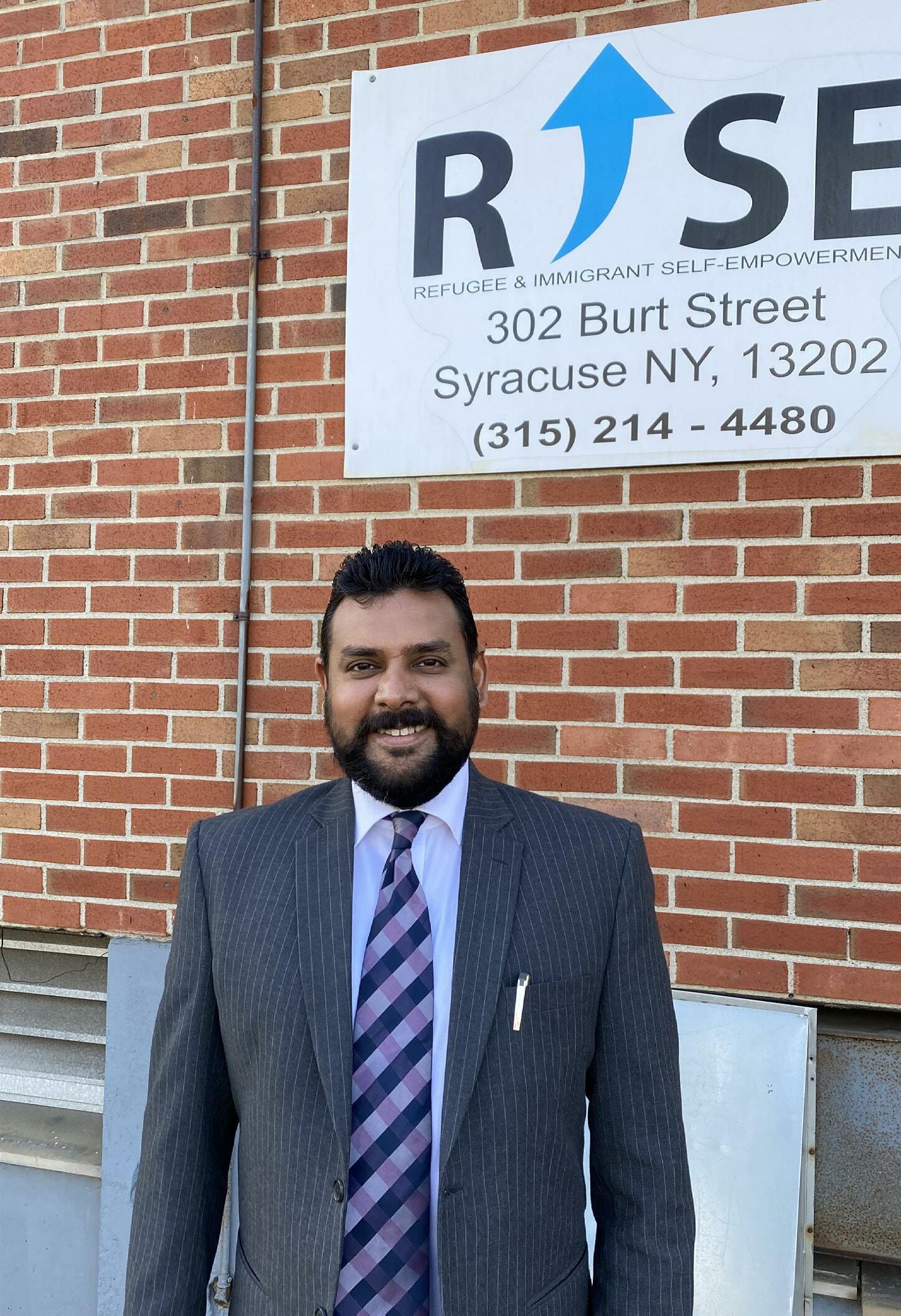
For more information on the agency’s services or to offer support, call 315214-4480 or email info@ refugeeandimmigrant. orgThose needing assistance with health care needs may contact James directly at 315322-9007 or at zeeshan@ refugeeandimmigrant.org
The agency’s website is www.refugeeandimmigrant. org
December 2022 • IN GOOD HEALTH – CNY’s Healthcare Newspaper • Page 11
Zeeshan James, a former banker from Pakistan, is the director of care management at RISE. “It means a lot to them to have someone who not only speaks their language, but understands their culture,” he says as he refer to immigrants and refugees who get help through RISE. The agency serves 1,840 individuals and 800 families. The care management program serves more than 280 individual clients and their families.
Approximately 90% of the RISE staff is former refugees and immigrants themselves. Collectively, they speak more than 29 languages.
helps refugees and — immigrants navigate health system
Program in Syracuse
By Eva Briggs, MD
Respiratory Syncytial Virus 101
RSV is not a new disease, but it’s hitting hard and early this year
Many of my patients have been confused about RSV lately. RSV is short for respiratory syncytial virus.
Respiratory because it infects the airways. Syncytial comes from the fusion of infected cells to form what is called syncytia. These are giant cells with several nuclei.
Virus is just that — a virus, not a bacterium. This means that antibiotics have no effect on RSV.
RSV is not a new disease, but it’s hitting hard and early this year. The theory is that all the masking and social distancing of the past several years pre vented many RSV infections and the virus is now making up for lost time. More people, especial ly young kids, are vulnerable because they had no exposure to develop immunity during the past few years.
Your respiratory system is something like a tree. The upper airway (nose, mouth, and throat) funnels air into your trachea, which is like the tree’s trunk.
The trachea branches first into two main stem bronchi, one to each lung. The mainstem bronchi branch into smaller bronchi, which in turn branch into still smaller airways called bronchioles, which lead to the tiny air sacs called alveoli.
RSV can affect any part of the airway. In the upper airway it can cause a runny nose with prodigious quantities of mucus. It has a propen sity to infect the bronchioles, causing an illness called bronchiolitis. It can even infect the alveoli to cause viral pneumonia. Even though it is pneu
monia, it’s still a viral pneumonia and antibiotics won’t cure it.
The bronchioles of infants and small children are tiny. When they fill with mucus due to RSV infection, it becomes hard for air to flow through. The result is wheezing and the need to use extra muscles get the air in and out of the lungs.
Even though there is wheezing, the mechanism is different from the wheezing due to asthma. Wheez ing in bronchiolitis often does not respond to nebulized medicine, like albuterol, or to steroids. Those are the
mainstays to treat acute wheezing due to asthma. Guidelines recom mend against their use in bronchi olitis. Because medicine is an art as well as a science, some clinicians will try albuterol on children wheezing due to RSV.
It’s possible to diagnose RSV from a nasal swab. In my opinion, that test isn’t much help for children not sick enough to be hospitalized. Other viruses can also cause bronchi olitis and severe respiratory symp toms. So it’s important to treat the child’s illness regardless of whether
mucus and trying to keep the child hydrated. Because babies breathe through their noses, it’s important to keep clearing their noses, whether it’s with the old standard bulb syringe or with a more advanced device such as the Nose Frieda. It’s a myth that formula or milk will cause the mucus to become thicker so don’t withhold it. Sick children need calories to fight infection. Treating fever with acet aminophen or ibuprofen will make your child more comfortable. There is no need to withhold these medicines if you bring your child in for medical care.
RSV tends to get worse for about five days before it starts to resolve. Some children do become sick enough to require emergency treatment despite their caregiver’s best efforts. Signs that indicate a child needs emergency treatment:
• Rapid or labored breath ing. Watch for “belly breathing” and for retractions where the chest becomes sucked in below the ribs, between the ribs, and/ or above the collar bones. There are you tube videos that show what labored breathing looks like.
• Skin turning blue. This is usually most visible around the lips or the fingernails.
• Dehydration. Dehydrated children have few wet diapers and may not be taking in fluids well.
• Lethargy or unresponsive ness.
it’s due to RSV or some other virus. There is no specific medicine to treat non-hospitalized patients with RSV. A sick child is contagious regardless of their RSV status and should be kept away from vulnerable people. So, RSV testing does not change the treatment.
The other people most at risk of serious illness from RSV are older adults and immunocompromised individuals.
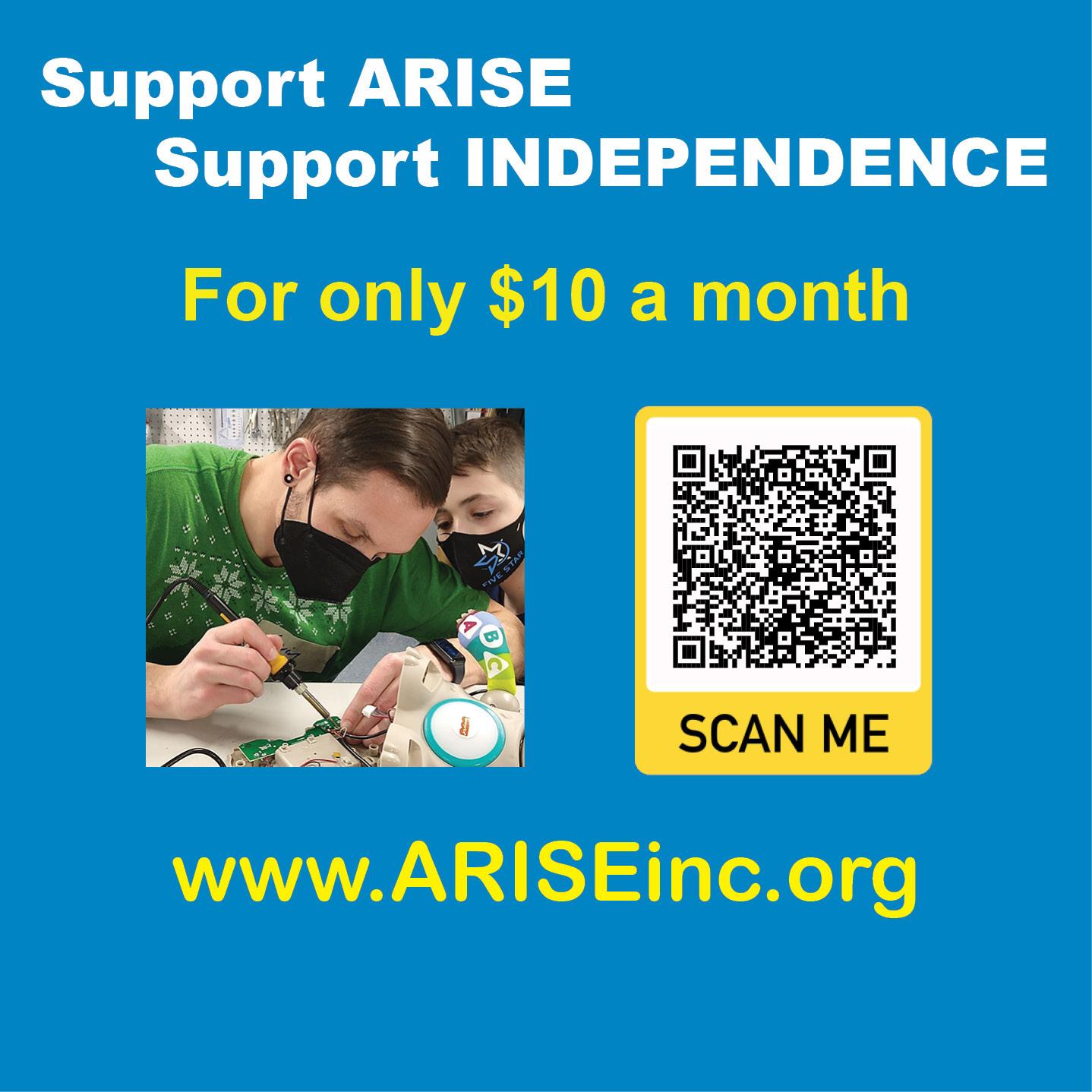
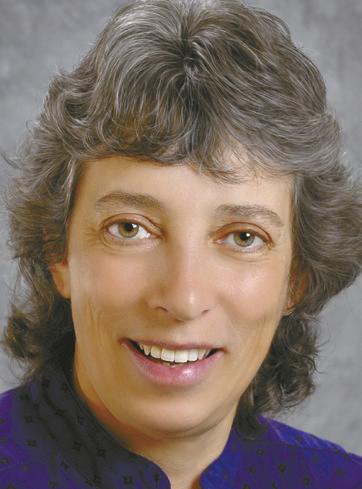
The most important things parents can do for a baby with RSV are keeping the baby’s nose clear of
Even with good care, 1% - 2 % of children younger than 1 year old who contract RSV will require hospitalization for treatment with oxygen and other modalities.
Page 12 • IN GOOD HEALTH – CNY’s Healthcare Newspaper • December 2022
My Turn Not a Subscriber? NAME ADDRESS CITY/TOWN STATE ZIP 1 YEAR (12 ISSUES) $21.00 $35.00 2 YEARS (24 ISSUES) Clip and Mail with payment to: In Good Health P.O. Box 276, Oswego, NY 13126 Subscribe today and get In Good Health: CNY’s Healthcare Newspaper right to your home or office!
Eva Briggs is a retired medical doctor who practiced in Central New York for several decades. She lives in Marcellus.


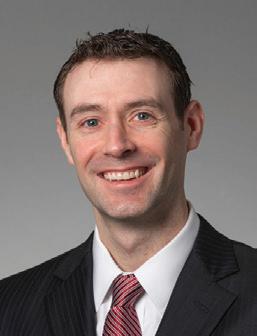








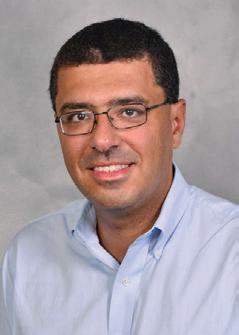
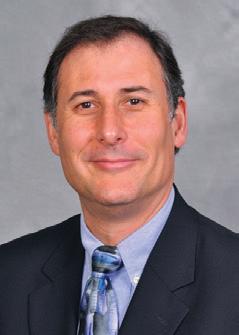

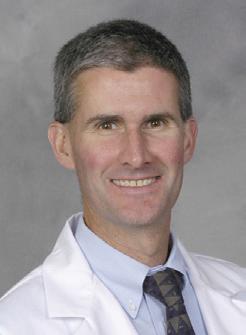


December 2022 • IN GOOD HEALTH – CNY’s Healthcare Newspaper • Page 13 Cardiovascular Group UPSTATE CARDIOLOGY CONTINUES TO GROW Our united exper tise brings you advanced technology and streamlined care. As par t of the Upstate Cardiovascular Group, we provide connec tions to research and surgical care OUR UPSTATE CARDIOLOGY TEAM CONTINUES TO GROW. PHYSICIANS FROM TOP LEFT: Dana C Aiello, MD Larr y S Charlamb MD Mark J Charlamb, MD Christopher A Nardone, MD Michael Fischi, MD Charles Perla, MD Theresa Waters, DO Andrew M Weinberg, DO Timothy D Ford, MD Rober t L Carhar t, Jr , MD Debanik Chaudhuri, MD Hani Kozman, MD Sakti Pada Mook herjee MD Amy Tucker, MD Daniel Villarreal MD O U R OF F I C E LO C AT I O N S 5112 WEST TAFT R OAD Liverpool • 315-701-2170 510 T O WNE DRIVE Fayetteville • 315-663-0500 90 PRESIDENTIAL PL A Z A Syracuse • 315-464-9335 208 TOWNSHIP BLVD Camillus • 315-488-2372 102 WEST SENE C A STREET Manlius • 315-464-9335 138 EAST GENESEE STREET Baldwinsville • 315-720-1305
Film Highlights the Pain of Loneliness
 By David Figura
By David Figura
Loneliness sucks. And at times, it sucks so bad it really hurts.”
Michael Benny, a CNY Central TV news anchor, made that comment at a recent screening of the docu mentary, “All The Lonely People,” at the Upstate Oasis building in East Syracuse.
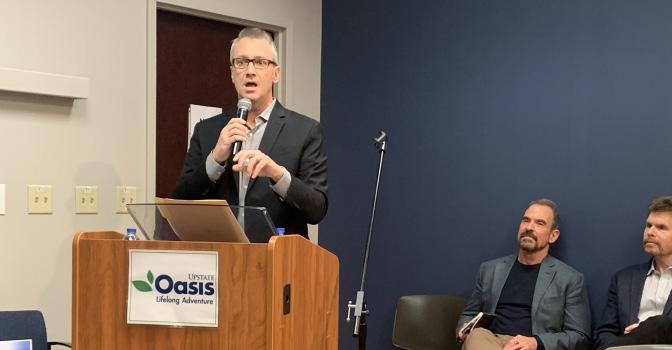
The film, which featured a panel question and answer discussion afterward, was attended by represen tatives of local public and private or ganizations that deal with the issue.
Benny, who moderated the event, said the nearly 60-minute film really resonated with him. He noted after his grandfather died it was extremely painful to watch how his grandmother was negatively affect ed both mentally and physically by the loss of her husband —and how things worsened with the rapid loss afterward of close friends and other family members.
The film was produced, writ ten and directed by Joseph Apple baum, 58, and Stu Maddux, 57, of the Clowder Group, a San Francis co-based film production company that focuses on social issues. The film’s title comes from The Beatles’ song, “Eleanor Rigby.”
“We wanted to draw attention to this important issue and leave people with a sense that there are solutions,” Applebaum said. “And maybe it will make people pause to think how iso lation and loneliness is affecting their own lives or the people around them that they may have not considered.”
The documentary features the stories of three men and four women, ages 17-89, from locations including Alaska, San Francisco, New York City and the United Kingdom. It traces the circumstances that caused their loneliness and the actions they took to change their lives for the better.
Between Oct. 3 and Nov. 4, the New York State Office for the Aging
sponsored 20 free screenings of the film at different locations across the state, hoping to spark reaction and action among government officials, health care agencies and others.
In 2017, the U.S. Surgeon Gener al declared social isolation a global pandemic — one that only worsened during the COVID-19 pandemic.
adolescents, young adults and older adults, seem to be particularly at risk with growing incidences of depres sion, substance abuse and suicide, according to the film.
Loneliness is a normal emo tion anyone can experience. It’s not indicative of a personal failing. There are different experiences and reasons that contribute to it.
Causes, as the film points out, in clude the loss of a loved one; chron ic or catastrophic illnesses; being estranged from one’s family; frequent moves or a move to locations where one has no social connections; feeling “othered” (living where you don’t feel welcomed); poverty and finan cial insecurity; lack of transporta tion — and heavy reliance on social
your comfort zone to try something new and volunteering.
Other individual actions include reaching out and telling others you are feeling lonely today; motivating yourself to move — to change situ ations that keep you isolated; caring for an animal (pet); expressing grat itude; getting outdoors and connect ing with nature; performing random acts of kindness and focusing on the good things in your life.
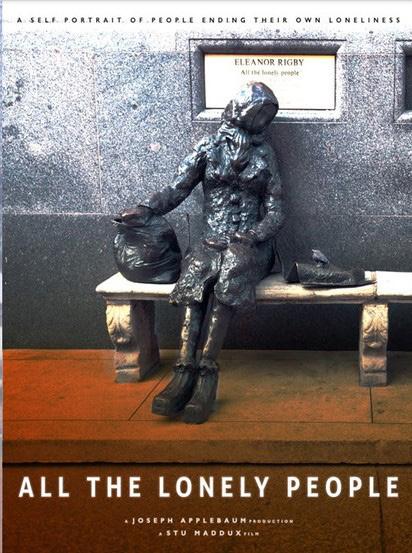
Ironically, as the film points out, one can be surrounded by people and still feel the sting of lone liness. Or, be phys ically isolated and still not feel lonely.
Ari Rossen, a 41-year-old enter tainer in Manhattan, laments in the film how he lives in a high-rise apartment building with 600 people and he only knows a few by name.
And then there is Carol Hill, a woman in San Francisco in her late 70s who lives in an apartment in Section 8 housing. Due to physical ailments, she hasn’t left her bed in six years. But thanks to her vibrant per sonality and reaching out to others, she’s often visited or called by family and friends.
“She told me once she has so many people coming over that she wishes she had more time alone,” Applebaum said. “She’s isolated, but certainly not lonely. Isolation is a physical issue and loneliness some thing beside that.”
The film points out the United Kingdom is a step ahead of America in dealing with the issue, having created a Ministry of Loneliness. The country has taken such steps
According to the AARP Public Policy Institute, social isolation and its effects has resulted in $6.7 billion annually in associated Medicare spending.
Loneliness can be as lethal as smoking 15 cigarettes a day, ac cording to Julianne Holt-Lundstad, professor of psychology and neuro science at Brigham Young University, one of the researchers cited by the film. It affects more than one third of American adults, impacting one’s mental health by worsening depres sion, anxiety, mood disorders and cognitive decline. Also, it can wors en one’s physical health, leading to higher rates of cardiovascular impair ment, chronic pain and fatigue.
Certain age groups, notably
media for all one’s social connections or as a sole sounding board of how one is managing one’s life.
“Loneliness often comes from a lack of meaningful social connec tions,” Applebaum said.
Research has shown that every one should have at least three reliable people (family or friends) who they can share their problems with, and can call for help in the event of an emergency, he noted.
Solutions include: making efforts to connect with others, catching up with old friends and investing time in maintaining current friendships, seeing what programs are available in your community that facilitate meeting and interacting with others, joining local groups or classes based on your interests, stepping outside
as placing “Chat Benches” in urban areas where lonely individuals can sit and chat with caring passersby; and has set up “Man Sheds” where lonely men can stop in any time and engage in woodworking or other activities/ hobbies.
Upstate Oasis in East Syracuse is part of a national nonprofit edu cational organization designed to enhance the quality of life for adults age 50 and older by helping individ uals make new friends and explore new activities. Activities include exercise programs along with educa tional and volunteer opportunities. See https://upstate.oasisnet.org/
For more on “All the Lonely Peo ple” and solutions to loneliness and social isolation, see www.allthelone lypeoplefilm.com
Page 14 • IN GOOD HEALTH – CNY’s Healthcare Newspaper • December 2022
“
Or as a famous newscaster in Syracuse says: ‘Loneliness sucks’
TOP: Ari Rossen dining alone in a Manhattan restaurant, Photo courtesy of The Clowder Group. INSET: “All The Lonely People” was written and directed by Joseph Applebaum, 58, and Stu Maddux, 57, of the Clowder Group, a San Francisco-based film production company that focuses on social issues. The film’s title comes from The Beatles’ song, “Eleanor Rigby.”
CNY Central Central TV news anchor Michael Benny speaking at screening of film in East Syracuse. Photo courtesy of David Figura.
‘In 2017, the U.S. Surgeon General declared social isolation a global pandemic — one that only worsened during the COVID-19 pandemic.’

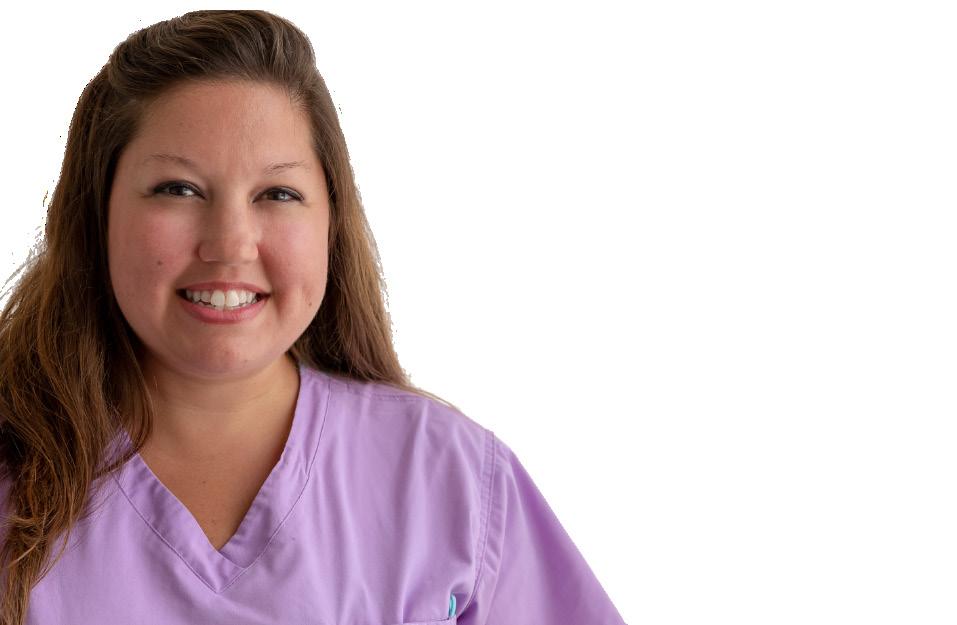



December 2022 • IN GOOD HEALTH – CNY’s Healthcare Newspaper • Page 15 – Lisa Clemmons, RN, BSN, OCN “The ongoing relationships I am able to build with my patients at HOA are very special to me. Our patients and dedicated team members keep me coming back to work each day!” What’s so special aboutcancer care nursing? Shadow us & we’ll show you! Scan the code to learn why you’ll love joining the HOA nursing team! We’re here to help with your family’s mental health needs You already know FCMG provides exceptional, family-focused physical health care. But did you know we also offer co-located behavioral health services in some of our locations? FCMG’s team-based, holistic approach leverages medical and mental health expertise to help detect, follow-up on a wide range of mild to moderate psychiatric disorders, including: •Depression • Obsessive-compullsive disorder •Generalized anxiety disorder • Post-traumatic stress disorder •Panic disorder • Chemical dependency issues Best of all, our mental health services are provided in the family-friendly, primary care setting you are already used to. To learn how FCMG can meet your mental health needs, contact us today or speak to your FCMG provider. New patients and families are welcome! Let our family care for yours! 315-472-1488 • fcmg.org
Healthy Holiday Gift Giving j

Ho - ho - Healthy Holidays!
By Mary Beth Roach
From soaps to food products, from massages to yoga, from outdoor adventures to sports gear — there’s no shortage of healthy gift-giving ideas at local shops this season.



j
SALT CITY ARTISANS and SYRACUSE
SOAPWORKS in Syracuse’s Hawley-Green neighborhood provide a large selection of soaps, lotions and hand and body butters.

The products are made on site. According to shop owner Rick Reina, they consist mostly of olive oil and coconut oils, and contain no synthetic colors or fragrances.
The shop also carries two goat milk soaps. Gift certificates aren’t available online, but can be ordered via email.


MASSAGE NAMASTE
The holidays can be a stressful time for many. But massages can offer the perfect post-holiday antidote. Many people will buy massage gift cards because they see it as a way to indulge their family member or friend, but wouldn’t do it for themselves, said Christopher Hess, president of INTEGRATIVE MASSAGE ASSOCIATES in Camillus and Skaneateles.
Hess is also a massage therapist for the Syracuse University Athletic Department. While massages available at many area spas offer more of a relaxing experience, Hess’ facility focuses more on medical, orthopedic and sports massages, which are geared toward helping with pain management and sports recovery and preparation. He said he finds that some people get these types of massages for older parents who are recuperating from joint replacement surgeries.
SCENTS TREATS



For those creative shoppers, who enjoy putting gift baskets together, healthful food items can make thoughtful presents. What better way to spend a chilly Central New York evening than with some tea or coffee and organic or vegan chocolate!
THE GREEN PLANET GROCERY, in Fairmount, for example, has a wide variety of teas, coffees, chocolates and vegan and gluten-free goodies, along with soaps from local vendors. There is also a Green Planet Grocery in Oswego.
Another gift that can help relieve stress is yoga classes. Many studios in the area offer a variety of packages and classes. Yoga is for everyone, said Sandy Eby, owner of the BLOSSOM YOGA AND WELLNESS CENTER in downtown Oswego. She offers a five-card package, which people can use to try out different kinds of yoga to find which the one they prefer. Her classes run from gentle stretching to Bikram Yoga, where the room is heated to 90 or 105 degrees, resembling a sauna. While books might not be the first thing to come to mind when thinking fitness gifts, there are a variety of diet, health and fitness titles, as well as hiking and cycling guides. THE RIVER’S END BOOKSTORE in downtown Oswego, for example, not only has health and cookbook sections, but the field guide section features a variety of activities for the outdoor enthusiasts.
BOOKS
Page 16 • IN GOOD HEALTH – CNY’s Healthcare Newspaper • December 2022 HAPPY holidays
HAPPY holidays
FITNESS
For those on your gift-giving list that are interested in fitness, cycling and running, there are plenty of options in the CNY area. There are memberships available at area gyms — but some people may be looking at home gym equipment, like treadmills, rowing machines or stationary bikes. These can be big-ticket items. Andy Venditti, owner of SYRACUSE FITNESS STORE on Erie Boulevard East and in Utica, said that during the holidays, he’ll often have couples come in looking for that type of machine to gift each other. Syracuse Fitness also provides delivery and assembly, eliminating those dreaded instructions or contending with missing parts. The shop also offers a selection of such smaller items as workout benches, exercise balls, free weights, bands and kettlebells. And of course, there are gift cards available.

Venditti pointed out that his team will also work with a buyer. Instead of indicating a specific dollar amount on the card, they can name the piece of equipment they want to gift their loved one.

While FLEET FEET has stores throughout the country, its stores in Central New York have become go-to places for many avid runners in the area — whether it be for sneakers, clothing, accessories or training programs. Cold-weather gear; reflectivity items; and recovery equipment, such as rollers or massage guns, are popular items, according to Kat O’Brien, marketing manager for Fleet Feet. There are also training programs, and staff can help those who’d like to purchase one or a portion of these sessions. Gift cards, too, are always an option. However, the cards cannot be used on the training programs.
Bike accessories are popular holiday gifts, said Zak Field, manager of SYRACUSE BICYCLE on Erie Boulevard East, and if the buyer knows the type of bike their cyclist has, staff can guide them toward the right kinds of gear. Field also suggested gift cards, which are available in any amount and don’t expire. These can also be used toward a maintenance package on the bike once the snow melts. Bike trainers, which turn the bikes into stationary bikes, allow cyclists to keep up with their cycling when they can’t be outside. Electric bikes are becoming more and more popular. As Field pointed out, it allows slower riders to join in group rides and therefore gets more people into the activity.
ADVENTURE

And speaking of those outdoor enthusiasts, there are a number of passes available for use in nearby county and state parks. THE EMPIRE PASS provides unlimited day-use vehicle entry year-round at most facilities that are operated by the state and the Department of Environmental Conservation. Gift cards are also available for those who enjoy golfing or camping.
Check out www.parks.ny.gov/admission for the gift cards, the Empire Pass, and other special passes.
The Onondaga County Parks Department boasts facilities with a wide range of amenities, like the trails at the Beaver Lake Nature Center and Highland Forest; beaches; and boat launches. And with the 40-plus-acre Rosamond Gifford Zoo, one can really rack up step counts walking around while enjoying the exhibits. These adventures can have the added bonus of quality time with family and friends.
The websites to check out for memberships and/or passes:
• For Beaver Lake Nature Center: https://onondagacountyparks.com/ parks/beaver-lake-nature-center/ httpwww-beaverlakenaturecenter-orggetinvolvedmembership/
• For Highland Forest: https:// onondagacountyparks.com/parks/ highland-forest/park-passes
• Season passes for Jamesville Beach and Oneida Shores Beach: https:// onondagacountyparks.com/activity/ swimming/
• Boat launch passes, valid at Onondaga Lake Park and Oneida Shores: https://onondagacountyparks. com/assets/Uploads/ SeasonBoatPassApp2022FILLABLE6.pdf

Have a happy and healthy holiday season.
It’s Holiday – But You Can Still Sneak in Some Fitness
By Deborah Jeanne Sergeant S
hopping, baking, deco rating, traveling, hosting, special events: is there any time in your busy holiday schedule for fitness?
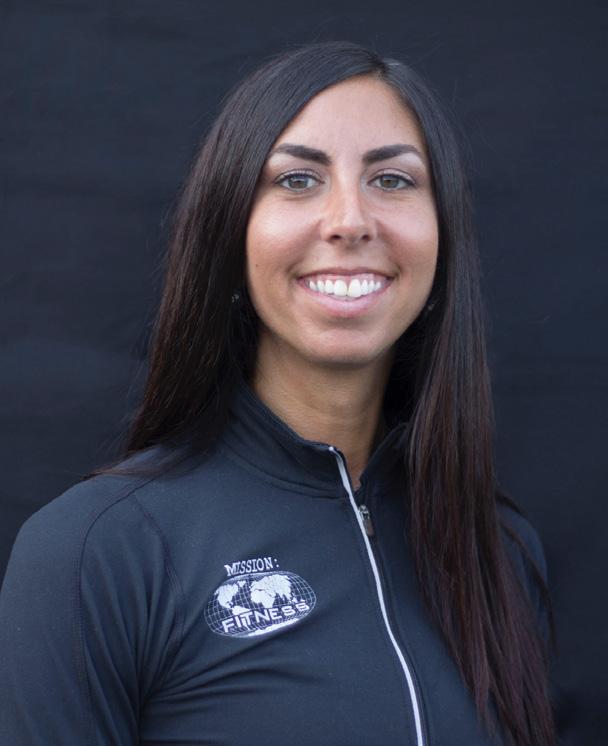
Unfortunately, many people let it slide for the month until faced with extra pounds and decondition ing by January. Despite the hectic season, it is possible to sneak in fitness.

Invite a family member to join you in a fitness endeavor. You can use this time to catch up and look at the community’s decorations. Or call a friend while you walk.
“If the weather per mits, go for a quick walk, even if 10 to15 minutes a few times a week,” said Paula Pacini, exercise coordinator at JCC. “Walk the family dog. Play games with the kids, outside if the weather fits. Even if you do 10 minutes here and there during the day and do it frequently, that’s great.”
If you’re traveling or home bound because of weather, you can still work out without the gym.
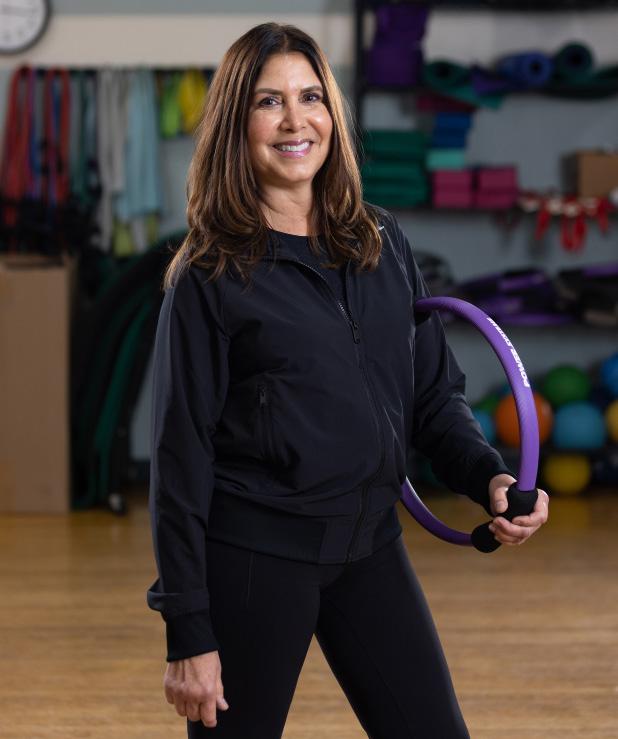
“Even on a plane, you could move your shoulders, lift your legs and try isometric exercise,” Paci ni said. “You can isolate your abs while breathing and meditate for five to 10 minutes. You have to be creative.”
Many hotels offer fitness centers and the concierge can tell you of places to stay active.
“If you’re traveling to see fami ly, doing a day pass at a local gym is a good idea,” said Jill Murphy, cer tified personal trainer and co-owner of Mission Fitness in East Syracuse. “Ask other family members if they would like to join you.”
If you’re time-crunched, consid er a high-intensity interval training style workout, which crams a lot of movement into a short time period. As a variation of HIIT, tabata work
outs can offer a good calorie burn. A tabata timer can help keep the ses sions moving, as these timers go off in brief cycles to monitor an intense workout session. After warming up and stretching, perform a four-min ute session, alternate among three bodyweight exercises like jumping jacks, burpees, jump squats and mountain climbers every 30 seconds with a 20-second rest between them. Do each movement to 100% capac ity, as hard and fast as possible. Incorporate movements for each major muscle group, plus the core, such as squats, push-ups and planks, along with something aerobic, like jumping jacks. For those with a little more time, following a fitness video on YouTube can help them stay moving with out leaving home and “if getting out in the cold demoti vates you,” Murphy said. “There are so many workouts you can find on there, with all different levels from beginner to athlete and everywhere in between.”
at JCC; BOTTOM: Jill Murphy
It may seem like sticking with a fitness regimen during the holidays is impossible. However, Murphy encourages clients to plan a physical activity or event. Mak ing it part of the schedule can help ensure it will happen, especially if it includes other people such as meet ing a friend for ice skating or taking the family cross country skiing.
“Your 2023 self will thank you for it,” she said.
December 2022 • IN GOOD HEALTH – CNY’s Healthcare Newspaper • Page 17
Family Health Important to Know
By Deborah Jeanne Sergeant
Do you know your family’s health history? This season may be a good time to find out.
“If you have a family member with risks in their health history, you should learn about it, as you may have to be careful about things like high blood pressure or other health concerns,” said Paula Pacini, exercise coordinator at the JCC.
The holiday season may seem an odd time to talk about family health history. However, in some ways, it’s the ideal time. You may see relatives face to face whom you seldom see. It’s also a time for reminiscing and sharing. How you bring up these topics makes a difference between learning more about your medical background and spurring a com pletely awkward and unwanted conversation.
If family members withhold health information, it may be for rea sons important to them. That could include embarrassment over per ceived stigma, such as for a mental health issue. Or perhaps discussing the death of beloved family members dredges up painful memories of a dark period.
Nonetheless, it is important to bring up health history.
“It allows a person to take steps to reduce his or her risk,” said Lynne Shopiro, president of the board of directors for the American Heart Association in Syracuse, chief nursing officer at Crouse Health and president of the Syracuse Board
Lynne Shopiro, chief nursing officer at Crouse Health, encourages people to discuss their health with other family members.

“It allows a person to take steps to reduce his or her risk,” she says.
of Directors of the American Heart Association. “Certain conditions tend to run in families, so knowing about the health of family members can help you and your doctor create a more appropriate plan for healthy living. This information can help you take preventive steps that can lead to better health outcomes in the future.”
Begin conversations about health matters with the person at the heart of the issue to avoid hearsay. For most families, it’s better to initiate the conversations one-on-one, not at the dinner table. Ask if it’s OK with the person to bring it up.
Instead of asking in the vein of morbid curiosity, frame your ques tions as to how they relate to you or your family, such as a trait or symp tom you notice in you or your child that a relative shared. Explain why you want to know, such as to seek early intervention.


“To make the conversations more comfortable, explain why you want
STD Rates Trend Upward
By Deborah Jeanne Sergeant
During the thick of the COVID-19 pandemic, it was anyone’s guess as to how quarantine and isolation would affect the rates of HIV and other sexually transmitted disease, which had been inching lower.
The New York State HIV/AIDS Annual Surveillance Report released in March 2021 by the Division of HIV Epidemiology, Evaluation and Partner Services states that in 2020, 26 people living in Onondaga Coun ty were newly diagnosed with HIV, three in Oswego, two in Madison and five in Cayuga counties.
Donna White, director of the Bu reau of Disease Control for Ononda ga County, said that the number have remained “relatively stable over the past several years,” citing access to pre-exposure prophylaxis (PrEP) for people at risk for HIV as a probable reason.
“The STD currently causing the greatest concern in our county is

syphilis, for which the incidence rate has quadrupled,” White said. “In 2020, only 28 new cases of syphilis (5.9 per 100,000) were reported. In 2021, the number climbed to 119 cas es (25.0 per 100,000), and in 2022 we have already had 119 cases to date.”
Syphilis raises concern because if left untreated, infections can last for years, “potentially resulting in severe disease,” White added. “Additional ly, syphilis can be passed from moth er to baby during pregnancy, posing significant risks to the fetus.”
Statewide, HIV rates have begun to climb and cities like Rochester and Buffalo, have seen spikes. Matthew Crehan Higgins, associate vice president specialty care at Evergreen Health in Buffalo, in part blames the increase in HIV diagnoses on the hesitancy of patients in seeking med ical care for symptoms because they feared catching COVID-19. Seeking a diagnosis early can mean early treatment, which in the case of HIV can mean preventing progression of the infection.
to know about their medical history and let them know you’re willing to share your health information with them too,” Shopiro said. “Many people prefer one-on-one conversa tions, but some families appreciate sitting down for a group discussion so everyone can share information at once.”

You can always assure the person sharing that the information will be used only with a healthcare provider as needed.
Sticking with symptom-related language rather than diagnosis-relat ed language can feel less stigmatizing to anyone asked about health history. Engage the person in a conversation, not an interrogation. It may also help to start with your concerns for your self or your child.
Don’t let concern over the other person’s possible sensitivity deter you from learning your family’s health history. This knowledge can help caregivers and patients plan and undertake lifestyle changes to help reduce risk.
“Knowing family health history is important,” said Monique Winnett, clinical psychologist at St. Joseph’s Health. “It’s a great opportunity to ask. For some, it may feel private, but maybe not at the table unless your family is more open.”
She said that learning about family mental health history is as important as physical health history. However the stigma associated with the former still prevents many fami lies from discussing it.

“People need to understand mental health is part of overall health,” Winnett said. “The more people acknowledge all our needs, the more we can improve health.”
You could also consider asking family members to fill out a question naire about family health issues that are important to you. Compared with a conversation, filling out a question naire can take the pressure off and allow family members time to frame their responses thoughtfully.
“Ultimately, while seeing increas es in diagnoses is never comfortable, an impact of increased access to and provision of testing is that those infections are identified earlier than they may have been in the past and the person has opportunity to access treatment quickly,” Higgins said. “The most important thing for people to know, especially if they are not currently aware of their HIV status, is that knowledge is power. HIV treat ment can be accessed quickly and is very effective.”
Once a patient receives diagno sis, antiretroviral therapy can help maintain good health and reduce risk of transmitting HIV. No cure for HIV exists. For people who are HIV neg ative but at risk, HIV pre-exposure prophylaxis medication can prevent
acquiring HIV.
“There are more options than ever with HIV pre-exposure pro phylaxis available in pill based and long-acting injectable forms,” Hig gins said.
“At the end of 2019, the New York State Department of Health began discussion of reframing the conversation away from the outdat ed disease-based model and toward a sexual health model, which is the path we have been on for a long time. Pressing forth with messages of fear have never worked but making peo ple aware of the options that exist for people of any HIV status and sup porting their harm reduction-based choices appears to be having a good impact overall.”
Page 18 • IN GOOD HEALTH – CNY’s Healthcare Newspaper • December 2022
Family end-of-year gatherings offer opportunity to update family health history
HAPPY holidays
Holiday: Stay Mentally Healthy
rules and be well
By Deborah Jeanne Sergeant
The holiday season can generate warmth, togetherness and joy among family members. But for some, it can manifest drama, emo tional pain and frustration. If some of your family members cause the latter, you can plan to preserve your mental health when you get together.
CONSIDER WHAT SETS YOU OFF
Instead of feeling caught by surprise, “know your personal triggers,” said Monique Winnett, clinical psychologist at St. Joseph’s Health. “There tends to be a lot of moving parts when we get together with family. Being more upfront and aware that can let us know when we need to take a step back.”
ENGAGE IN SELF-CARE
If you arrive at a get-together exhausted, stressed and emotional ly empty, it’s likely you won’t fare as well emotionally as if you arrive refreshed and content.
“Do things that help you feel like your best self,” Winnett said. “Take a long walk. Talk with someone who helps you relax. Destress.”
PLAN CONVERSATIONS
Especially if you’re hosting, agree in advance that you won’t dis cuss hot-button topics.
“My general principle is that we have conflict with other people over the differences we have with them,” said Rich O’Neill, psychologist in the Upstate Medical University depart ment of psychology, and host of WCNY TV’s Cycle of Health. “Find what we have in common. But for some folks, conflict is the way they get excited.”
Some family members may feel relieved that you don’t want to hash out politics or religion and join you in friendly small talk.
STAY REALISTIC
Don’t anticipate that your uncle who asks embarrassing questions will behave himself this year. Sen gupta said that instead, it’s wise to prepare for the questions. For example, if your uncle asks why you dropped out of college, explain your plans for the year. But don’t expect him to simply accept you know what you’re doing and praise your ideas.
“Give people positive comments and steer the conversation away from the negative,” O’Neill said. “Social

niceties are there for a reason: they work.”
REALIZE IT’S NOT ABOUT YOU
If Uncle Nosey asks why you’re not as successful in business as your cousin, perhaps he is trying to com pensate for your cousin’s romantic shortcomings. Maybe your uncle asks within your cousin’s earshot to build her up —even though it tears you down. Or he could boast to boost his own image.
“Don’t take it personally,” O’Neill said. “Who knows where they’re coming from emotionally and psychologically. Remember this is more about them than it is about me.”
Sometimes, Aunt Busybody asks about your love life so she has something to think about and talk about because her life is boring. Share only what you want the rest of your family to know. Her motivation could be as innocent as hoping you find someone as wonderful as her husband, without the realization that you feel content single.
DON’T BLURT OUT A REPLY
When pressed about a sensitive topic, pause.
“If you feel hurt or angry, take a breath and respond in a way that takes you to your goal of having a good time with that person and at the party,” O’Neill said.
Excuse yourself to go to the restroom. This allows time for you to compose a reply, whether you answer the question or not. Knee-jerk responses and fighting fire with fire result in regret. Asking, “Why do you want to know?” both buys time and puts the questioner on the spot.
Sometimes questioners clearly want to stir the pot, such as, “You don’t really think your daughter has chosen the right career, do you?”
Staying upbeat is the right strate gy: “I support my daughter’s deci sions; it’s her life.” And then change the subject.
USE HUMOR
Emulate the 30-something wom an questioned about why she’s not married. She offered, “Just lucky, I guess” as her cheeky reply. Humor can diffuse a situation if not at the expense of others. Cruel remarks or mocking ramps up the drama.
SET BOUNDARIES
“One simple thing that you can try is to practice things to say like, ‘That’s a difficult topic; I’d rather not talk about it,’” O’Neill said. “Politi cians are excellent at this. They avoid offending people by doing the pivot, which is saying, ‘That’s a very good question’ and talk about what they want to. We can follow that example. If you feel like you’re being set up, don’t take the bait.”
FOCUS ON THE POSITIVE
It can be easy to show up at a family gathering anticipating a bad time and then experience one; how ever, Sengupta said that engaging in an activity instead of only talking can help the time together pass pleasant ly than struggling to make non-offen sive small talk.
Zero in on a positive, uplifting family member. But extend grace to the downers, especially considering the social awkwardness generated by the pandemic’s isolation.
REDUCE YOUR EXPOSURE
Plan to give your family a signal it’s time to go if things get too dicey. If your mental health will suffer regardless of the strategies you em ploy, it’s OK to stop in briefly to the gathering and then leave — or not even go at all. See non-toxic family members another time so you can avoid others’ verbal haranguing.
CURB THE BOOZE
If you host, consider reducing the alcohol or eliminating it altogether, as this strategy can improve guests’ behavior. Drinking tends to lift inhi bitions.
“If everyone brings a bottle of wine, ‘Thank you very much’ and put them in the cupboard,” O’Neill said.
GET BUSY
Planning games and activities can keep everyone busy enough to not get into verbal conflicts.
December 2022 • IN GOOD HEALTH – CNY’s Healthcare Newspaper • Page 19
Follow 10
HAPPY holidays
Beware the Buffet: Holiday Eating Tips
By Deborah Jeanne Sergeant
With the holiday season comes good cheer, jolly times and a bevy of buffet options.
Unfortunately, many of the choices are calorie-laden and void of nutrients. With a few strategies, you can stay festive while eating well and not forgoing favorites.
It may seem sensible to skip breakfast and lunch if your plans include a big family meal in the evening, but Julie Mellen, registered dietitian with Upstate Medical Uni versity, warns against it.


“Don’t go starving,” she said. “Navigating the party food or buffet is most important. Have a light snack before you go to the gathering.”
It’s far better to eat modest, balanced meals throughout the day with plenty of protein and produce so hunger does not drive poor food choices.
Mellen advises scoping out the buffet and selecting modest por tions of favorites to “avoid wasting calories on things you don’t love,” she said.
Fill half the plate with vegetables and some fruit. Whole fruit is always a good choice. However, fruit “sal ads” with marshmallows or whipped topping pack plenty of sugar.
“Take the time to enjoy your food and conversation,” Mellen said. “Be mindful of your food choices, what and how much you are eating, your hunger and fullness. Slow down.”
Look for lean protein sources: turkey breast, shrimp cocktail, and salmon. Marbled beef, ham and processed meats are less-than-ide al choices. Protein should cover one-quarter of the plate.
Starches should occupy only one-quarter of the plate. Finding whole grain options may be difficult. Brown rice pilaf, whole grain rolls or sweet potatoes are a few examples.
How food is prepared also mat ters.
“Avoid foods that are deep fried,” Mellen said. “Stick with baked, barbecued and grilled.”
As at any meal, portion size makes a difference in caloric intake. Grabbing a smaller-sized plate from the dessert table can make it easier to
‘SAD Season’: Depression Risks Rise as Days Get Shorter
As the daylight hours shrink, people’s moods can wind up in the tank.
Rest assured, you’re not alone. It’s the SAD season for those affected by seasonal affective disorder. That’s the depression, fatigue and with drawal that shorter days and longer nights often bring.
“The seasonal mood change can come in different shapes and forms,” said physician Dorothy Sit, associate professor of psychiatry and behav ioral sciences at Northwestern Uni versity Feinberg School of Medicine in Chicago.
“It can be a clinical diagnosis
of depression, which we call SAD, but some people experience a milder form,” Sit said. “The clinical diagno sis means it is quite intense; it affects people all day for many weeks and can impact their functioning. In mild er cases, people can feel a bit blah, but can push through. Still, function ing will feel a bit harder.”
Besides feeling sluggish, people may be hungrier, crave carbohy drates, eat more and gain weight. They may also feel less motivated and find less enjoyment in activities.
“This is a form of depression that cycles naturally; it starts every fall and winter and remits every spring
control portions. If you’re dining at a restaurant, ask for half your portion to be boxed to take home or order an appetizer and a salad as your meal.
A holiday party or meal without dessert seems rather Grinch-like. Maria Winkworth, registered and certified dietitian and owner at Wink worth Wellness in Syracuse, advises that practicing mindful eating “by slowing down and focusing on the flavor and texture of your food” can help control the portion size of that favorite treat.

Many people unthinkingly drink far more calories than they are aware. Winkworth said that drinking water can both boost hydration and help balance high sodium foods. Alternate drinking water with caloric beverag es to reduce the caloric intake.
Alicia Olsen, dietitian with Oswego Health, advises selecting pumpkin as the pie of choice, as it contains fiber, vitamins A and C and pure pumpkin puree is only 30 calo ries a cup. (Of course, pie has sugar and other ingredients that add to the calorie count.)
“Cookies will all have sugar and probably butter,” Olsen said. “But oatmeal will give you more fiber. Try to have a small serving. Try to avoid saying, ‘This is the last time I’ll have Christmas cookies for the year.’ You’ll probably have other times to
and summer,” Sit said in a North western Medicine news release.
A major remedy for SAD is start ing the day with bright light therapy. Sit recommends a unit that produces 10,000 LUX of white light to be used in the 30 minutes after waking up.
“The treatment provides an up lift in the mood, improves a person’s functioning and may completely resolve their symptoms,” she noted. “It’s even effective for non season al depression, depression in pregnan cy and in certain people with bipolar depression.”
Sit stressed that it’s important to use the bright light under the direction of a physician or clinician, who can help detect any side effects or problems that arise, and discuss alternatives if needed.
“Light from the sun is the prima ry regulator that provides the signal
have them so don’t feel you won’t have them again. It’s a season, not just one day.”
Many people give food gifts during the season, which can add up to many unwanted calories. But that does not mean you have to eat them all.
“You don’t want to seem un grateful,” Olsen said. “It may be a more affordable gift option to bake your favorite cookies. Accept the gift. Maybe leave some out and freeze some so the gift lasts several months.”
You could also immediately open the cookies to share at the party or take the peanut brittle to another party, counting that present as a gift of time.
“Food is a big part of the holi days,” Olsen said. “It’s meant to be enjoyed. Take a small amount and move on from there.”
for our bodies’ circadian rhythms,” Sit said. “Not having significant ex posure to light can affect that. Bright light therapy is used in a way to am plify our circadian rhythms, which appears to boost our mood. Timing the light so the exposure is first thing in the morning may produce more of an impact to regulate our rhythms. We are still trying to fully understand how this mechanism works.”
People can also battle winter blues by staying active. This could include taking hikes with the family or exploring nature. It may be exer cising, learning a new skill or visiting a museum.
It’s also important to maintain a regular sleep-wake schedule. Naps should only be 20 to 30 minutes long, so don’t oversleep, Sit advised.
Page 20 • IN GOOD HEALTH – CNY’s Healthcare Newspaper • December 2022
Mellen Winkworth
HAPPY holidays
SmartBites
By Anne Palumbo
The skinny on healthy eating
Prime Rib: The Good, the Bad, and the Delicious
Every December, my husband and I let down our “meat guard” and consume a cut of beef that we rarely eat: prime rib. It’s an indulgence we justify because it’s the holiday, it tastes delicious and, well, you know, it’s what everyone wants.
Apparently, we’re not alone. Prime rib, according to multiple sources, is one of the top 5 meats con sumed during the holiday season.
But is it the healthiest meat choice? Oh, probably not. But since many of us do eat it on occasion, here now is everything you ever wanted to know about prime rib (but were afraid to ask).
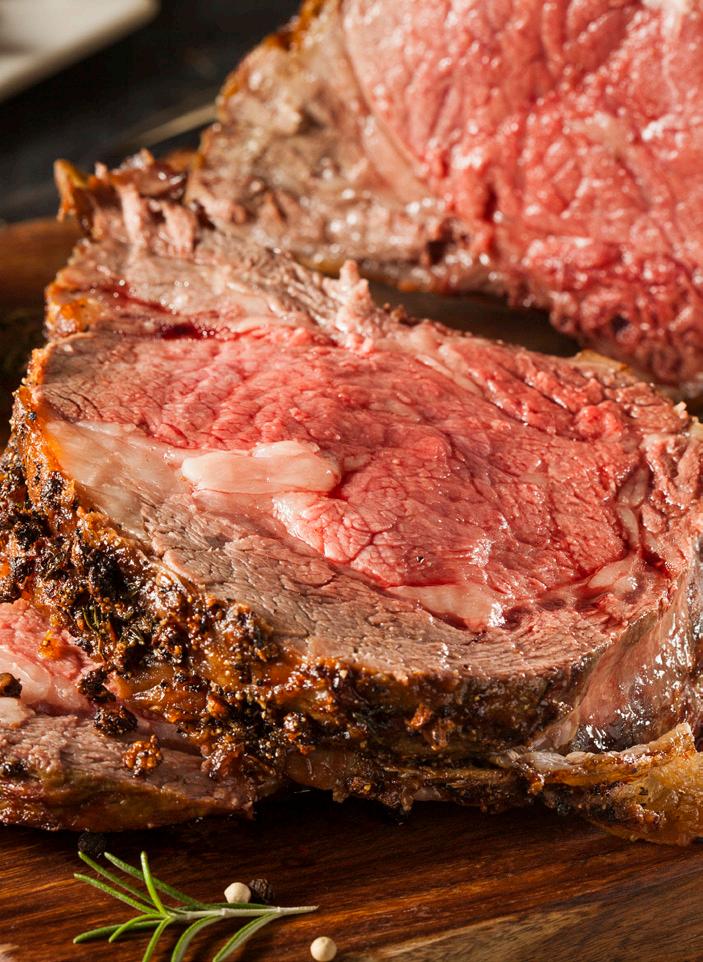
IS PRIME RIB GOOD FOR ME?
It can be. Prime rib is a tasty source of many critical nutrients. A 3-oz portion (about the size of a deck of cards) boasts about 20 grams of complete protein, which delivers a decent chunk of recommended daily amounts for many. Essential for building and maintaining tissues and cells, protein also bolsters your immune system, provides energy, and balances fluids.
On the vitamin B front, prime rib rocks with several B vitamins, most specifically B-12 (nearly 100% of your daily needs). Because B-12 is import ant for red blood cell formation, it’s crucial for the prevention of anemia. One serving of prime rib also contrib utes good amounts of B-6 and niacin, both needed for turning food into energy.
Prime rib sizzles with minerals, especially selenium, iron and —the
most abundant mineral of all — zinc. While zinc fortifies your immune system, selenium protects your body from oxidative stress, and iron keeps your engine running.
IS PRIME RIB BAD FOR ME?
Possibly, and here’s why. A 3-oz serving has 300 calories, 72 milli grams of cholesterol and 24 grams of fat (10 of which are saturated fat). Because cholesterol and saturated fat can lead to heart disease, the Amer ican Heart Association recommends that we limit our daily consumption of both: cholesterol to 300 milligrams and saturated fat to 20-22 grams. As suming that “festive” portions might land closer to 6 ounces for many, we could easily knock off a day’s worth of saturated fat and nearly 50% of our cholesterol limit in one sitting. Yikes, and we haven’t even men tioned the 600 calories!
WHAT MAKES PRIME RIB SO DARN DELICIOUS?
Fat, fat and more fat. The “eye” of meat in prime rib’s center is not only marbled with fat, it has a fat-marbled muscle around it. More over, a thick cap of fat surrounds most of the roast. Since the muscles of this cut aren’t heavily used, prime rib is also extremely tender and juicy.


WHAT SHOULD I DO?
Only you and your heart can answer that. But if you do indulge, experts suggest moderate portions and no seconds
Holiday Prime Rib with Rosemary and Thyme
Serves 10 — Adapted from tastesbetterfromscratch.com
5 pounds beef prime rib: bone-in or boneless 3½ teaspoons Kosher salt, divided 2 teaspoons coarse black pepper 2 teaspoons fresh rosemary 1 teaspoon fresh thyme 8 cloves garlic , minced ¼ cup olive oil horseradish (optional)
Remove your prime rib from the refrigerator one hour before cooking. Season it on all sides with 2 teaspoons salt and cover it loosely with plastic wrap as it comes to room temperature.
Place oven rack in the center and preheat oven to 500 degrees F.
Mix together 1½ teaspoons salt, pepper, rosemary, thyme, garlic, and
Helpful tips
Prime rib is graded accord ing to fat marbling, age and price. Prime is the best, followed by Choice and Select. Some butchers offer dry-aged prime rib, which adds another $2 to $3 a pound. Giv en that this meal will be a splurge no matter how you slice it, Amer ica’s Test Kitchen says springing for the “Prime” cut makes sense, although a “Choice” roast will be almost as good. Many butchers detach the bone and tie it back on, which simplifies carving and slicing and may add extra flavor. Boneless versions are also available.
olive oil. Pat the roast with paper towels. Spoon seasoning over it, rub bing it onto all sides.
Place the roast bone-side down in a roasting pan. If using boneless, place the roast on a rack inside the pan. Insert an ovenproof thermome ter into the thickest part of the roast.
Brown the roast at 500 degrees for 15 minutes, then reduce the oven temperature to 325 degrees and roast for another 20-30 minutes until the thermometer reaches 125 degrees for rare/medium rare (roast will con tinue to cook slightly after removing from the oven). If you like your meat more cooked, leave it in the oven longer.
Remove roast from the oven and tent it with foil. Allow it to rest for 20 minutes before carving. Carve your roast by slicing against the grain at about ½ inch thickness. Serve with horseradish, if desired.


Anne Palumbo is a lifestyle colum nist, food guru, and seasoned cook, who has perfected the art of preparing nutritious, calorie-conscious dishes. She is hungry for your questions and comments about SmartBites, so be in touch with Anne at avpalumbo@aol.com.
Ahead of a winter that will see colder than usual weather across most of the country, according to the latest forecast from the Old Farmer’s Almanac, the personal-finance website WalletHub recently released its 2022’s Best Winter Holiday Destinations report, as well as accompanying videos and expert commentary.
Focusing on cost and convenience rather than scenic beauty, WalletHub compared nearly 70 of the largest U.S. metro areas grouped by warm and cold weather. Each destination was analyzed based on 37 key metrics, primarily the expense and hassle of traveling to each location but also on other indicators, such as weather forecasts, safety and variety of activities.
Here’s a quick glimpse at some of the report’s most interesting findings:





• Among cold destinations, Omaha, Nebraska, has the lowest price for a threestar hotel room, $55, which is 2.4 times lower than Worcester, Massachusetts, the city with the highest at $133.
• Among warm destinations, Houston has the lowest price for a three-star hotel room, $40, which is 5.2 times lower than Honolulu, the city with the highest at $208.
• Among warm destinations, Orlando has the most restaurants (per square root of population), 7.281483, which is 29.0 times more than in Deltona, Florida, the city with the fewest at 0.250773.
To view the full report and your metro area’s rank, visit: wallethub.com/edu/best-winter-holiday-destinations/7930
• The average flight to a popular cold winter destination costs $396.17, lasts 3 hours and 30 minutes and has 0.28 connections. In comparison, the average flight to a popular warm winter destination costs $521.74, lasts 5 hours and 17 minutes and has 0.57 connections.
December 2022 • IN GOOD HEALTH – CNY’s Healthcare Newspaper • Page 21
Best Destination for Winter Travel BEST COLD DESTINATIONS FOR WINTER TRAVEL 1. New York City 2. Atlanta 3. Washington 4. Chicago 5. St. Louis 6. Cincinnati 7. Kansas City 8. Boston 9. Albuquerque 10. Philadelphia BEST WARM DESTINATIONS FOR WINTER TRAVEL 1. Las Vegas 2. Austin 3. San Diego 4. Dallas 5. San Antonio 6. Phoenix 7. Houston 8. San Francisco 9. Los Angeles 10. Charleston
Hospitalizations From Flu Are Highest in Over a Decade
The hospitalization rate from flu cases at this point in the year is higher than the rate observed at this same point during previous flu seasons going back to 2010-2011, according to the Centers for Disease Control and Prevention.
As of its Nov. 10 update, influ enza tracking by the CDC shows at least 2.8 million illnesses, 23,000 hospitalizations, and 1,300 deaths from flu.
“We need to take flu seriously, especially when it comes to older adults, young children, pregnant women, nursing home residents, and people with asthma, lung disease, heart disease, diabetes, or obesi ty,” says physician Kathleen Robis chon, senior medical director, utiliza tion management and medical policy
5
at Excellus BlueCross Blue Shield. The 20212022 flu season saw an estimat ed 9 million flu illnesses, 4 million flu-re lated medical visits, 100,000 flu-related hospitalizations, and 5,000 flu deaths, accord ing to the CDC.
Older adults ac counted for 83% of the deaths.
Influenza, or ‘flu’, is a contagious respiratory illness caused by influ enza viruses. Flu season typically
Things You Need to Know About the Flu, RSV
By Ernst Lamothe Jr.
Not to be taken lightly, the flu has been overshadowed during the past few years because of COVID-19. However flu-related illnesses have risen dra matically this season causing hospi tal system strain and an abundance of sick children and adults before expected.
“Everybody has had COVID-19 overload, but there are other things that we have to protect ourselves against. Flu should be on the top of the list,” said Mary Bucher, senior registered nurse at Oswego Health. “We have gone back to not wearing masks and everyone is back out together. People have been hearing about COVID-19 for more than two years and people just forgot about how the flu can affect this season as well.”

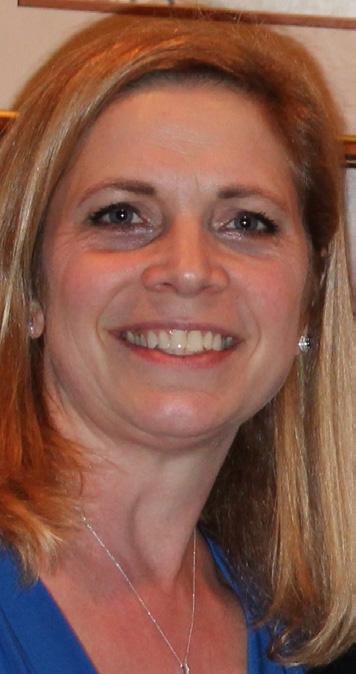
Bucher, who is also an associate professor of medicine, gives five facts about the flu and viruses.
1.Most vulnerable
Most people with the flu get better on their own. However, influenza can be serious, and with complications, can be deadly. People who are at higher risk of developing flu complications include children younger than 2, adults older than 65, residents of nursing homes and other long-term care facilities or those with weakened immune systems, accord ing to the Mayo Clinic.
“We have to protect people like our older residents and kids. They are quite vulnerable to the flu and can have deadly results,” Bucher said. “Some years the flu is stronger than other years.”
2.Myths
Many misconceptions revolve around the flu. She said she
often hears conspiracy theories, but the most often statement involves the flu shot.
“People think the flu shot will give you the flu,” said Bucher. “It is a dead virus that gets injected and it does not give you the flu. If you start feeling sick or run down sometimes people don’t realize that maybe you were sick a few days before the shot as well.”
3.Flu shot
Flu vaccines, often called flu shots, are vaccines that protect against the four influenza viruses that research indicates will be most common during the upcoming sea son. Most flu vaccines are flu shots given with a needle. But there also is a nasal spray flu vaccine.
“We know the flu vaccine is never going to be 100% effective. Either way, if you do have future flu symptoms, the symptoms will be lessened because you had the shot,” said Bucher. “Something is better than nothing when it comes to your immunity.”
Women who are pregnant or breastfeeding are encouraged to be vaccinated. Flu is more likely to cause severe illness in pregnant women than in healthy women who aren’t pregnant. Changes in the immune system, heart and lungs during pregnancy make pregnant women and women who have given birth during the past two weeks more prone to severe illness from flu, including illness resulting in hospi talization.
4.Cold vs Flu
Flu symptoms usually come on suddenly. People who have flu often feel some or all of these symptoms, feeling fever/chills,
begins in October, peaks in February, and continues until May. Last season, activity began to increase in No vember and remained elevated until mid-June.
According to Robischon, most people who get the flu have mild illness and recover, without medical care, in less than two weeks. Some people in high-risk groups are more likely to develop flu-related compli cations.
Vaccination helps prevent in fection and can also prevent serious outcomes in vaccinated people who still get sick with flu. The CDC rec ommends everyone ages 6 months and older gets a flu vaccine annually.
“Last flu season, about half (51.4%) of eligible individuals received the flu vaccine, which is
simply too few,” says Robischon. Vaccination rates vary by race. Last season, 54.6% of those vaccinated were white, 45.0% were Hispanic, and 44.5% were black.
Flu vaccinations are available at nearly every neighborhood and grocery store pharmacy, and at many medical practices. Vaccine supplies are plentiful manufacturers project they will supply the U.S. with as many as 183 million doses. All will be quadrivalent (four component). New this season, is a recommendation for the use of higher dose and adjuvant ed flu vaccines in people ages 65 and older over the standard dose, unadju vanted flu vaccines.
“Consult your health care pro vider if you have any questions about your eligibility to receive the flu vaccine,” advises Robischon. “While it is never too early or too late in the flu season to get vaccinated, sooner is better as it takes about two weeks for the vaccine to provide protection.”
Find a flu vaccine site near you online by visiting www.Vaccines. gov, and then clicking on “Find Flu Vaccines.”
cough, sore throat, muscle or body aches, headaches and fatigue. Colds are usually milder than flu. Colds generally do not result in serious health problems, such as pneumonia, bacterial infections or hospitaliza tions. Flu can have serious associated complications.
“People will have regular, light symptoms when it comes to the flu, but having a fever is a high indica tion that it could be more severe. Fever is generally the first thing you feel,” Bucher said.
The best way to avoid either are the simple tips that were given during COVID-19.
“The easiest way is to wash your hands regularly. Keep your hands away from your eyes and mouth,” added Bucher. “We tell people when they are sick they should stay home. The first 24 to 48 hours is critical when it comes to any illness. If you don’t stay home you have the oppor tunity to go out in the community and spread the virus.”
5.RSV
Respiratory syncytial virus is a common respiratory virus that usually causes mild, cold-like symp toms. Most people recover in a week or two. But RSV can be serious, espe cially for infants and older adults. It has been a hot medical topic because of the number of children that have been hospitalized this early fall. RSV is the most common cause of bron chiolitis in younger adults, which is inflammation of the small airways in the lung and pneumonia, which is infections in the lung.
Each year in the United States, RSV leads to about 2.1 million outpa tient visits among children younger than 5 and between 58,000-80,000 hospitalizations among children younger than 5, according to the Centers for Disease Control and Prevention.
“Nationwide you are seeing a rise in these and other causes which are leading to children in the hospi tal,” said Buhcer.
Page 22 • IN GOOD HEALTH – CNY’s Healthcare Newspaper • December 2022
Mary Bucher is a senior registered nurse at Oswego Health
As of Nov. 10, influenza tracking by the CDC shows at least 2.8 million illnesses, 23,000 hospitalizations and 1,300 deaths from flu
Kathleen Robischon
Parenting
By Melissa Stefanec MelissaStefanec@yahoo.com
Enough with the Stuff; Let’s Make Some Magic
As a middle-class parent, the holidays fill me with sugar, spice — and a little dash of dread.
It’s not the potential family melt downs or the to-do lists that have me twitching with fear. Nor is it the overcommitment and packed sched ules. What leaves my glass of eggnog half empty is the torpedo of gifts that is about to be fired at my house.
There are many jolly elves who overpack Santa’s sleigh each year. There is me, my husband, several grandparents, aunts, uncles and a va riety of teachers, friends and neigh bors. Each of us has nothing but good intentions and love in their hearts. But our good intentions end up over stuffing our homes (and eventually our landfills).
• Why the dread?
If you think I’m being melodra matic about the collective parental dread, pay attention to how many parents talk about the holidays. If you spend enough time with parents, they will start talking about their hol iday fears — fear of shopping, fear of spending, fear of too many presents,
fear of gifts going unused, fear of having to make room in their homes, fear of wasted money and resources. The holidays shouldn’t be a time to live in fear of mass consumerism. The holidays should be about some thing more.
• The magic was never in the stuff
Rationally, we all know gifts don’t make magic. To that end, I challenge you to recall the stocking stuffers you got years ago or more than a few big gifts. I bet you can’t.
What you likely remember is doing relatively ordinary things with people whom you love. For example, I remember making armies of chocolate-covered peanut balls with my grandmother and mother. I remember watching my father sing in the choir. I remember going caroling at nursing homes. I remember poking myself with a needle as I made pop corn and cranberry garland (the mild bloodshed was totally worth it).
If you want to create those sorts of holiday magic for the kids in your life, think about how you can replace the gift of stuff with the gift of mem ories.
Be on the Lookout for These Common Winter Injuries
By Ken Sturtz
The onset of winter brings with it a variety of potential hazards for Central New Yorkers as they enjoy the season.
“There’s plenty of things to do and plenty of opportunities to hurt yourself unfortunately,” said Christo pher Tanski.
Tanski teaches emergency med icine at Upstate Medical University in Syracuse. He also treats patients in the emergency room at Upstate University Hospital. One of his big gest worries in wintertime is illnesses related to shoveling snow.
Nationwide, shoveling snow ac counts for thousands of injuries each winter and as many as 100 deaths. They run the gamut from a strained back to a heart attack.
“Every winter we’ll see patients who went out and shoveled snow for 30 minutes and then started having chest pain,” Tanski said.

While shoveling snow might seem relatively easy it can be strenu ous, especially when the snow is wet and heavy. Colder temperatures and physical exertion increase the strain on a person’s heart, particularly if they’re normally not active.

The ER also sees all sorts of sprains, strains and broken bones from winter activities such as skiing, hockey and ice skating. Tanski said people are likely more prone to inju ry in winter because muscles don’t adapt as well in the cold as when it’s warm. If you’re going out in sub zero temperatures it’s a good idea to stretch and give your body some time to acclimate to the environment before hitting the slopes or getting on the ice.
The biggest concern related to temperature, however, is hypother mia and frostbite.
“Often they’re insidious in their onset,” Tanski said. “You start to get a little bit cold and instead of going in or putting on more layers you stay out and maybe your fingertips and feet start to get numb.”
It’s easy for the situation to get out of hand before someone realizes what’s happening. If your finger tips and toes get cold your body is already redirecting blood away from less important parts to more import ant things like your heart and brain.
The important thing is to be attentive to the early warning signs, such as cold fingers and toes, and then act to prevent further issues,
Try the hybrid approach to gift giving I’m not suggesting you quit gift ing cold turkey. I get it; buying gifts is fun. Kids like gifts. It feels good for everyone. But, this year, I challenge you to take a hybrid approach. Pick out a special gift or two, but then do something beautiful; give kids the gift of your time.
• Ideas for making actual magic Here is a list of ideas for swap ping out a few gifts and giving chil dren the gift of your attention. Most of these ideas are simple, inexpen sive and require little preparation. However, the benefits will be felt and remembered for years to come.
• Take a holiday jelly stroll: Take a hike in an actual wonderland. Learn about the different types of pine trees you encounter. To add some merriment to your walk, sing carols as though no one is listening.
• Learn about a tradition from another culture or faith: For many folks, this time of year is sacred and pious. Have the whole family learn about another culture’s or faith’s winter observances.
• Play a silly board game: Take the time you would have spent wrapping gifts and play the silliest board game you own. Make it a yearly tradition.
• See what the animals do for the holidays: Most zoos close for only a few days a year. Go to the and make a game out of noting what the animals do for the holidays.
• Learn to make a holiday dish from another culture: Replace one of your holiday go-tos with a dish you’ve never heard of. Have the kids help prepare it and
learn about the history behind that dish.
• Have a holiday music dance party: Dancing to holiday songs is sure to make for some awkward dance moves and a lot of laughs.
• Give candy to strangers: Go to a busy store and hand out candy canes with handwritten messages of kindness. Just think of how good your kids will feel to make people feel more blessed and less stressed.
• Paint rocks and leave them on community trails: Have a holiday rockpainting party and then find places to leave those rocks throughout your community.
• Do learn-to-draws and decorate with your artwork: The internet is full of learn-to-draw videos for kids. Throughout the season, draw as a family. Then use those pieces of artwork as decorations. If you end up with too many masterpieces, consider donating them to a nursing home or community center.
• Make popcorn or paper garland: While you do it, talk about things that make you happy. Creating together is a great time to forge a shared bond.
• There’s no place like bowl for the holidays: Start a family tradition of bowling in your favorite holiday attire or pajamas.
• Give the gift or memories
As you start thinking about what to gift your favorite kids this year, I encourage you to think outside the gift box. Give the special kids in your life the gift of your time. Help them learn how to create magic for themselves, you and those around them.
Tanski said. That could be as simple as putting on another layer of cloth ing or coming out of the cold.
Slips and falls are common yearround, but tick up in winter. The vast majority of slip and fall incidents result in little more than embarrass ment and some scrapes and bruises.
“For kids and younger folks, falls are probably not an issue,” Tanski said. “You get up and dust yourself off.”
But as people get older, falls can become more serious, he said. According to the Centers for Disease Control and Prevention more than one in four older adults falls each year, but fewer than half tell their doctor.
Older adults might have brittle bones, making them more prone to fractures or breaks. Tanski said some one might want to get checked out if they can’t get right up after a fall or if it’s really sore and doesn’t get better.
While slip and fall injuries are
a greater concern for older adults, sledding injuries are a concern for children.
On average more than 20,000 children younger than 19 are treat ed for sledding injuries annually, according to the Center on Injury Research at Nationwide Children’s Hospital. Children on sleds run the risk of head, neck and spine injuries, Tanski said.
“I always want to temper that by saying look I’m not telling people to not go sledding, not by a long shot,” he said. “I like to go sledding with my kids.”
It’s a good idea to supervise young children and to avoid sledding near roads. Be aware of the environ ment and possible obstacles such as trees, fence posts and rocks. Consider checking the hill for hidden obstacles that are covered by snow and could be dangerous.
“You should be aware of what’s at the bottom of the hill,” Tanski said.
December 2022 • IN GOOD HEALTH – CNY’s Healthcare Newspaper • Page 23
10 Tips to Stay Healthy This Winter
Ten things you should this winter to stay in top form
By Kimberly Blaker
The medical field has long known people are more prone to catching colds and the flu during the cold winter months. Pre viously, scientists primarily attribut ed this to people living and breathing together in enclosed environments. But cold temperatures also make our immune system sluggish and prevent our bodies from fighting off infection, according to a 2015 PBS report, “Scientists Finally Prove Why Cold Weather Makes You Sick.” Now, after the COVID-19 pandemic, taking extra precautions during the winter to maintain health is incredibly vital.
KEEP YOUR HOME WARM
Maintain ing warmth is essential to ward off win ter-related illness es. So keep your home temperature comfortably warm by setting your thermostat between 68 and 75 °F.
Optimum daytime temperatures for living areas are 70 to 72 °F. At night, set the thermostat just a couple of degrees cooler for your bedrooms. What›s comfortable varies from per son-to-person. So if you feel cold at 72 °F, turn it up a notch or two. The idea is to remain com fortable.
DRESS IN LAYERS
Layer your clothing, whether you’re at home or heading out. Wear a T-shirt or cami, long sleeve shirt or blouse, and a sweater over the top. This way, you can set your thermostat at a moderate tempera ture and peel off layers to maintain the perfect comfort level. Layers will also ensure you maintain comfort if you go out.
When you do leave the house, wear warm boots, gloves and a hat even if you’ll be outside just briefly. We lose most of our body heat through the extremities. So it’s vital to keep those areas warm.
EAT HEALTHILY
A healthy diet is essential year-round. But during the cold winter months, certain foods are particularly beneficial to the immune system.
The much-criticized starchy potato is an excellent source of nutri tion. It’s high in vitamins B6 and C, both of which boost immunity.
Collards, kale, and chard, among other dark leafy greens, are high in vitamins A, C, and K.
Winter squash, including pumpkin, butternut, spaghetti and acorn, is high in beta-carotene. Our bodies convert beta-carotene to vitamin A, another vital source that boosts the immune system.
Several fruits are also particu larly beneficial and protect against winter-related ailments. Citrus fruits are a rich source of vitamin C. Kiwi packs even more of a ‘C’ punch than oranges. Other fruits that help keep your immune system strong include pomegranates, blueberries, cherries, and even bananas.
DRINK PLENTY OF WATER
Dehydration causes a host of health complications. Despite this, most people don’t drink nearly enough water. As a result, health experts say they’re in a state of chronic dehydration. According to the report “Prevalence of Inadequate Hydration Among US Children and Disparities by Gender and Race/Ethnicity: National Health and Nutrition Examination Survey, “ half of all children are dehydrated.”
So how much water should you drink each day? A commonly repeated recom mendation is eight 8-ounce glasses per day. But why would a 100-pound inactive woman need the same intake as an active 220-pound man?
It turns out there’s a formula to determine how much water you should consume. Divide your weight by 2.2. Next, if you’re under 30, multiply by 40; between ages 30 to 55, multiply by 35; if older than 55, multiply by 30. Now divide your result by 28.3 for the number of ounces you should drink daily.
Divide this by 8 to determine the number of cups.
WASH YOUR HANDS
One of the best ways to reduce the spread of germs is by washing your hands regularly.
This not only reduces the risk of transferring your bacteria to others.
AVOID PUBLIC PLACES DURING OUTBREAKS
If we learned anything during 2020, it’s important to avoid public places and to social distance during a pandemic. When you hear of the flu or virus outbreak in your area, stay home if possible. This will serve double-duty by keeping you out of the cold that makes you more susceptible. When you go out in public, wear a mask, and maintain at least 6 feet of distance.
it reduces the chance that you’ll transfer bacteria to yourself. When some one with a cold, the flu or coronavirus touches a door knob, handrail, gas pump or other objects, their germs get transferred to the object. Bacteria and viruses can survive this way for several hours to days. If you come along and touch the germ-ridden object, the bacteria transfer to your hands. Then when you scratch your nose or grab a cookie to eat, you become infected.
So when you wash your hands, use soap and warm water. Rub between your fingers and un derneath your fingernails. Then rinse your hands for 20 seconds and dry them thoroughly. In public restrooms, use a paper towel to turn off the water and open the restroom door after you’ve washed your hands.
KEEP ACTIVE
An active lifestyle is crucial to a healthy heart, lungs, and bones. But a moderately active lifestyle also improves your immune sys tem, according to a 2010 study cited in “Exercise and Respiratory Tract Viral Infections.” Prolonged intense exercise suppresses the immune system, however.
So the key is to exer cise regularly but in moderation. Unless you’re trying out for the Olym pics, a 20-mile run won’t likely serve you well. Instead, opt for a brisk walk for 30 – 60 minutes each day.
If you want to do some thing more vigorous, do 20-30 minute runs or aerobic
workouts 3 to 4 times a week with weight lifting in between.
TAKE AN ANTIVIRAL MEDICATION
If you’re exposed to the flu, be proactive and nip it in the bud with a prescription for Relenza or Tamiflu. The only catch is there’s a short window of opportunity for these medications to be effective. These treat ments must begin within 48 hours of the onset of symptoms. So as soon as you feel signs of the flu coming on, call your doctor. If your doctor can’t see you right away, go to an urgent care.
GET A MASSAGE
According to a study for Cedars-Sinai Medical Center, Swedish massage increases lymphocytes, improving the immune system’s effectiveness. So now you have the perfect excuse to exchange massages with your partner to help stave off illness.
GET YOUR Z›S
When we sleep, our bodies release cytokines, which promote sleep. Specific cytokines also ward off infection. When we don’t get enough sleep, we’re deprived of the protective cytokines, leav ing us more susceptible to infection.
Sleep require ments vary from person to person. But children should get at least 10 hours of sleep each night.
Teens require nine to 10 and adults seven to eight.
Page 24 • IN GOOD HEALTH – CNY’s Healthcare Newspaper • December 2022 continued next page







December 2022 • IN GOOD HEALTH – CNY’s Healthcare Newspaper • Page 25 Living
Starts with Loretto. As one of Central New York’s largest and most comprehensive continuing healthcare organizations, Loretto delivers personfirst, affordable adult care. Through our 19 specialized programs and communities, we empower each resident and patient to continue living their best life, Like Loretta. Want to live like Loretta? LiveLikeLoretta.org Assisted Living Skilled Nursing Independent Living Loretta Ad_In Good Health_9.75x6.69_DEC22.indd 1 11/18/22 9:33 AM Bring Your Passion to Crouse… Today! UP TO $45,000 EXPERIENCED RN SIGN-ON BONUS • RELOCATION • LOAN PAYBACK UP TO $25,000 NEW GRAD RN
Like Loretta
Excellus Announces 2022 Health Equity Awards Recipients
Liberty Resources,
Oswego
Health

Foundation,
Refugee & Immigrant Self-Empowerment are some of the agencies sharing $209,000
Excellus BlueCross Blue Shield announced in November the recipients of its 2022 Health Equity Awards. The awards repre sent more than $560,000 in financial support for community programs that address racial and ethnic health disparities across its Upstate New York service area.
“This second round of Health Equity Award funding will support underserved people with health disadvantages due to race, ethnicity, disability, sex, gender and/or rural disparities,” said physician Gina Cuyler, Excellus BCBS vice president of health equity and community investments. “We are proud to align our resources and efforts to partner and identify areas of collaboration with our local community organiza tions.”

Earlier this year, Excellus BCBS invited organizations to apply for awards of up to $30,000 each to help fund programs to improve health equity in communities of color, especially within Black and Latino communities. These segments of our community continue to suffer from health care and social disadvantages due to racism and discrimination. Award categories include, but are not limited to, improving the com munity’s physical health and mental health, reducing social disparities in health care, and ensuring access to health care services.
The funding from Excellus BCBS will support 21 nonprofit, 501(c)(3) organizations across the Rochester, CNY/Syracuse, Utica, and Southern Tier regions. With more than 170 applicants, a comprehensive review process included input from individ uals with diverse backgrounds and experiences to assess each proposal. Grant recipients were selected based on clear, defined goals and measur able results for reducing health dis parities and improving health equity.
CNY awardees
In the Central New York region, $209,000 is being awarded to support the following eight initiatives:


• Family & Children’s Service of Ithaca: Funding will support Family and Children’s Services workforce pipeline program to increase men tal health providers in Tompkins County.
• Home HeadQuarters, Inc.: Fund ing will support Home Headquarters windows and doors replacement pro gram, that has been proven to reduce the rates of children exposed to leadbased paint in the city of Syracuse.
• Joseph’s House for Women, Inc.: Funding will support the Joseph’s House Health & Wellness program to expand and increase access to supportive mental health services for pregnant women currently experi encing crisis.
• Liberty Resources, Inc.: Funding will support the addition of Liberty
Resources reproductive health care for low-income, uninsured/underin sured men and women in Onondaga County.
• On Point for College, Inc.: Fund ing will support mental health work shops for On Point college students and quarterly cultural competency mental health trainings for front-line advising staff.
• Oswego Health Foundation: Fund ing will support Oswego Health’s mobile mental health services allowing individuals with severe or persistent mental illness to live safe and secure lives independently in the community.
• Refugee & Immigrant Self-Empow erment, Inc.: Funding will support the Syracuse Refugee Agriculture Program (SyRAP) in Oswego, NY.
• Young Men’s Christian Association of Central New York, Inc.: Funding will support wellness services and assistance through health advocates for pregnant women, specifically designed for New Americans at the Northside Women’s Center.
For the latest information on the health plan’s community investments and partnerships, members, provid ers and employers are encouraged to visit https://news.excellusbcbs. com/news-room/community-invest ments-partnerships.
Page 26 • IN GOOD HEALTH – CNY’s Healthcare Newspaper • December 2022 800-858-8109 100% OSHA Compliant • Patient Gowns • Lab Coat Service • Scrubs • Sheets/Pillow Cases • Bath/Hand Towels • Massage Linens • Professional Mat Service • Fluid Resistant Garments Serving Central New York HealthWearRental.com PINE HILL Hometown Pharmacy 2949 State Rte. 370, Cato, NY 315-626-3161 www.pinehillpharmacy.com VIAGRA OR CIALIS (Prescription Required - Generic Versions of) $$$ SAVE $$$ Lowest prices in the area!! STOP paying those HIGH prices you hear advertised. CALL US TODAY for details and savings! Your LOCAL pharmacy for ED Meds!
Inviting one bedroom apartments close to essential services and stores, as well as emergency and health services for Seniors (over 62) or receiving SS with a permanent mobility impairment within income guidelines Inviting one bedroom apartments close to essential services and stores, as well as emergency and health services for Seniors (over 62) or receiving SS with a permanent mobility impairment within income guidelines Stoneleigh Apartments 400 Lamb Ave, Canastota • 697-2847 Where your neighbors are like family! Stoneleigh Apartments 400 Lamb Ave, Canastota • 697-2847
The funding from Excellus BCBS supports 21 nonprofit, 501(c)(3) organizations across the Rochester, CNY/ Syracuse, Utica, and Southern Tier regions.
Physician Gina Cuyler, Excellus BCBS vice president of health equity and community investments.
By Jim Miller



Top 5 Financial Scams Targeting Seniors Today


Dear Savvy Senior,



What are the most common scams today that target elderly seniors? My 75-year-old mother has been swindled several times over the past year, so I’m being extra cautious.

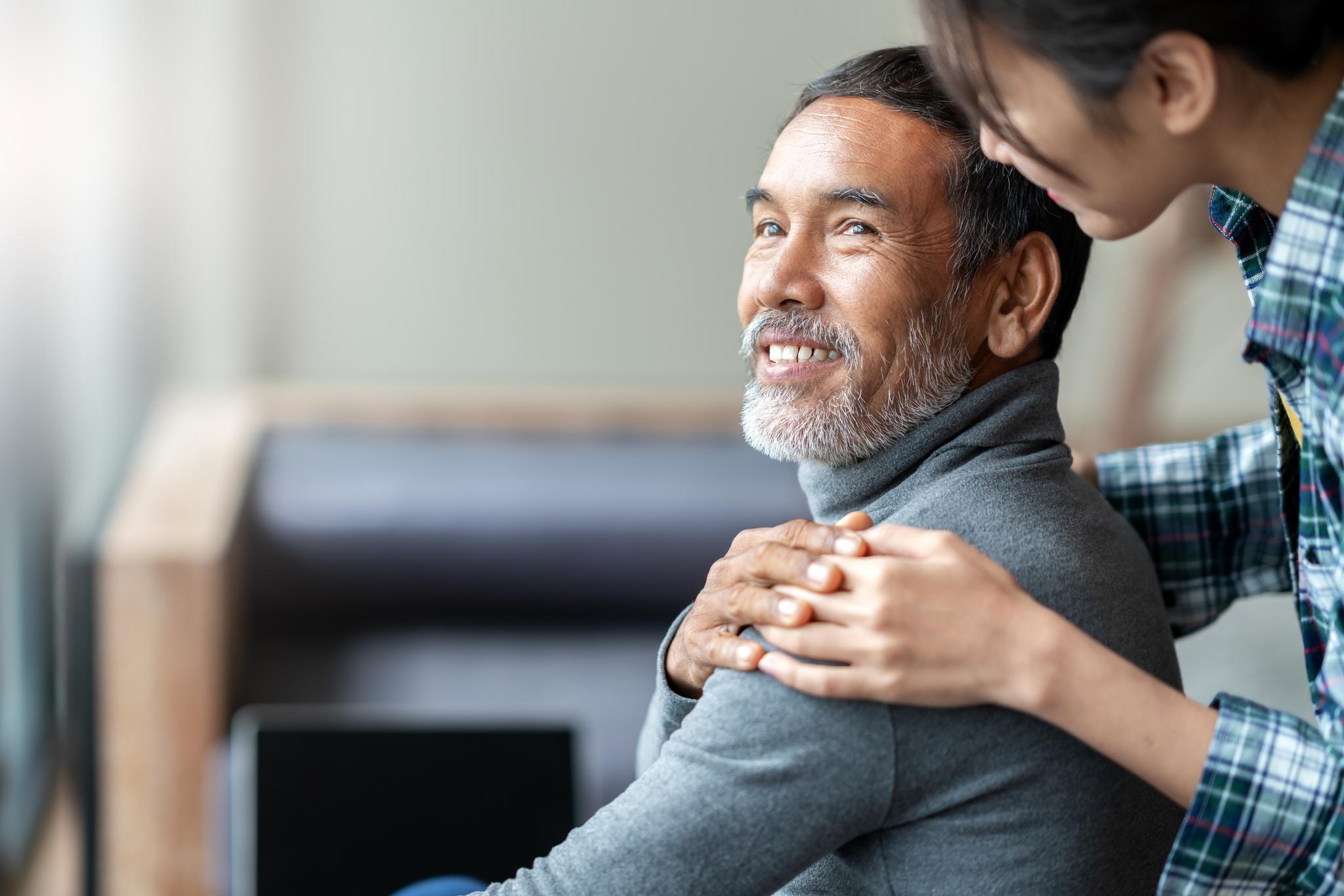

 — Paranoid Patty
— Paranoid Patty
Dear Patty,
Great question! While many scams today are universal, there are certain types of fraud that specifically target older adults or affects them disproportionately. Unfortunately,
trusting older adults who answer the phone. Some robocalls may claim that a warranty is expiring on their car or electronic device, and payment is needed to renew it. These scam mers may also “spoof” the number to make the call look authentic.
One common robocall is the “Can you hear me?” call. When the older person says “yes,” the scammer
– CNY’s Healthcare Newspaper • Page 27
records their voice and hangs up. The criminal then has a voice signature to authorize unwanted charges on items like stolen credit cards. 4. Computer tech support scams: Theses scams prey on senior’s lack Your Medicare Specialist and Independent Agent Ser ving New York State’s Medicare eligible population since 2008! Why Call a 1-800 number when you can get personalized Theresa Cangemi, CSA, CLTC Medicare Made Simple, LLC 3 years October 2021 Your Medicare Specialist and Independent Agent Ser ving New York State’s Medicare eligible population since 2008! DO YOU HAVE PROPER MEDICARE COVERAGE? FIND OUT. Theresa Cangemi, CSA, CLTC “Celebrating 14 years in October 2022!” M E E T I N G Y O U W H E R E Y O U A R E Buffalo ~ Niagara ~ Rochester~ Syracuse (716) 463-2966 (585) 532-5558 (315) 530-1645 www.carepatrol.com
Loretto is Evolving to Meet Community Needs in 2023
 By Kimberly Townsend
By Kimberly Townsend
To meet the evolving needs of our local community, it’s essen tial to keep up with local and national trends. Various polls have shown most Americans want to re main in their homes as they get older. Statistics also show a significant increase in the number of individuals who will need dementia-related care. Meanwhile, technology continues to advance. What does this mean for Central New York?
An increasing number of com munity members are learning that Loretto has much to offer for those who want to remain in their homes as they age. Staying home doesn’t mean there isn’t a need for profes sional care and support; it just means the need is different. Loretto has seen increased demand for day programs through our Program of All-inclu sive Care for the Elderly (PACE) and transportation to/from home to help care for those individuals. And when those individuals need a greater level of care, it’s easy to seamlessly transi tion to a variety of options within the robust Loretto system.
Loretto is also a local leader in implementing creative, evi dence-based ways to use new technologies. Loretto recently started using virtual reality (VR) to engage residents in an innovative approach

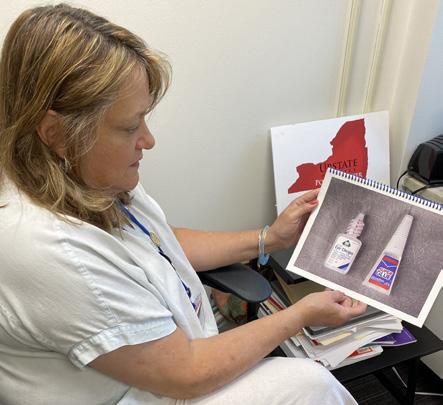

to therapy that fosters cognitive and physical wellness. Earlier this year, we introduced the “It’s Never Too Late” (iN2L) system, a digital plat form that actively engages memory care residents in virtual experiences that align with their personal pas sions, in a safe and supervised envi ronment. We will be integrating more technology to benefit our residents in the upcoming year.
Loretto is recognized as a lead er in memory care in Central New York, and the demand for this care continues to increase. In addition to virtual reality, we’ve learned Montes sori-based programming is another evidence-based approach to provide the highest level of memory care. Loretto is committed to expanding memory care and continuing to an alyze trends for how to best care for our community in 2023.
Kimberly Townsend is president and chief executive officer at Loretto and author of “Lifecircle Leader ship” and “Lessons in Lifecircle Leadership.”

More information about her is available at DrKimberly Townsend.com and LorettoCNY.org.

Ask
The Social Security Office
By Warren Beck, Social Security District Manager in Syracuse
Social Security Benefits to Increase in 2023
Approximately 70 million Americans will see an 8.7% increase in their Social Securi ty benefits and Supplemental Secu rity Income (SSI) payments in 2023. On average, Social Security benefits will increase by more than $140 per month starting in January.

Federal benefit rates increase when the cost-of-living rises, as mea sured by the Department of Labor’s Consumer Price Index (CPI-W). The CPI-W rises when inflation increases, leading to a higher cost-of-living. This change means prices for goods and services, on average, are high er. The cost-of-living adjustment (COLA) helps to offset these costs.
We will mail COLA notices throughout the month of December to retirement, survivors and dis ability beneficiaries, SSI recipients and representative payees. But if you want to know your new benefit amount sooner, you can securely obtain your Social Security COLA no tice online using the message center in your personal my Social Security account. You can access this infor mation in early December, prior to receiving the mailed notice. Benefit amounts will not be available before December. Since you will receive the COLA notice online or in the mail, you don’t need to contact us to get your new benefit amount.
If you prefer to access your COLA notice online and not receive the mailed notice, you can log in to your personal my Social Security account to opt out by changing your preferences in the message center.
Q&A

Q: I got married and I need to change my name in Social Security’s records. What do I do?
A: If you change your name due to marriage or for any other reason, you’ll need to report the change and get a corrected Social Security card with your new name. You will need to fill out Form SS-5. You can get a copy of this form by visiting www.ssa.gov/ss5doc or by calling our toll-free number 1-800-772-1213 (TTY 1-800-325-0778). You’ll also need to provide the original marriage certificate showing your new and old names. You can mail or take the documentation to your local Social Security office. In some cases, we may need other forms of documen tation as well. For more information, visit www.ssa.gov/ssnumber.
You can update your preferences to opt out of the mailed COLA no tice, and any other notices that are available online. Did you know you can receive a text or email alert when there is a new message waiting for you? That way, you always know when we have something important for you — like your COLA notice. If you don’t have an account yet, you must have created one by Nov. 15, 2022 to receive the 2023 COLA notice online.
“Medicare premiums are going down and Social Security benefits are going up in 2023, which will give seniors more peace of mind and breathing room. This year’s sub stantial Social Security cost-of-living adjustment is the first time in over a decade that Medicare premiums are not rising and shows that we can provide more support to older Amer icans who count on the benefits they have earned,” Acting Commissioner Kilolo Kijakazi said.
January 2023 marks when other changes will happen based on the increase in the national average wage index. For example, the maximum amount of earnings subject to Social Security payroll tax in 2023 will be higher. The retirement earnings test exempt amount will also change in 2023.
Be among the first to know! Sign up for or log in to your personal my Social Security account today. Choose email or text under “message cen ter preferences” to receive courtesy notifications.
Q: Is it true I must now receive my ben efits through direct deposit?
A: Anyone applying for bene fits on or after May 1, 2011, will be required to receive their payments electronically. Paper checks will no longer be an option for most people. If you don’t have a bank account, you can get your benefits through the Direct Express debit MasterCard. Switching from checks to electronic payments is fast, easy and free at www.godirect.org. You also can call the U.S. Treasury Processing Center’s toll-free helpline at 1-800333-1795, speak with a bank or credit union representative, or contact Social Security for help.
Page 28 • IN GOOD HEALTH – CNY’s Healthcare Newspaper • December 2022
Make In Good Health Newspaper Your Advserting Choice in 2023. Request a media kit for information on readership and rates. editor@cnyhealth.com ALL ABOUT AccessCNY What makes apples such Upstate New York Poison Center: 65 Years Helping Keep People Safe. P. 14 ALSO INSIDE New Botox Competitor That Lasts Longer New Medication for Alopecia Areata Perfusionist: A Little-Known Career with an Average Salary of $92,987. Vegetarians and Bone Fracture Risk Conquering Cancer Cancer survivors share their stories Advances in cancer treatment offer hope Out-of-pocket costs for cancer care keep climbing Post-cancer health: What you need to do. the nonprofit plans to build in northern Onondaga County FREE Top Issues Affecting Seniors Today P.23 GOLISANO CHILDREN’S HOSPITAL SEES SURGE IN PATIENT VISITS AUTISM Syracuse hospital has seen a 17% jump in number of appointments. Story on p. 11 NEW ONCOLOGIST IN TOWN Physician Jill Yeager grew up in Cicero and graduated from SUNY Upstate. She discusses her training and the importance of holistic oncology approach to treating cancer. THINGS YOU NEED TO KNOW ABOUT ALLERGIES 5 P. 16 IS PELOTON WORTH IT? STORY ON P. 16
Excellus has new chief administrative officer
Lisa White has been appointed as chief administrative officer and executive vice president at Excellus BlueCross BlueShield. White, in her new role, has also joined the compa ny’s executive leadership team. White start ed her career at the Health Plan 31 years ago as a customer care representative. She’s since held a variety of po sitions through out the com pany. White, for example, helped start the company’s first compliance department, focusing on government regulations, mandates and more.
She now oversees about a dozen departments whose primary re sponsibilities support the enterprise, including legal, audit, facilities, gov ernance, strategy, corporate devel opment, corporate communications, business resilience, risk management and ethics, privacy and compliance.
“Lisa brings years of experience and expertise overseeing complex administrative support functions, and we’re proud to have her join our executive leadership team,” said Jim Reed, president and CEO, Excellus BCBS.
“We’ve been lucky over the years to have Lisa at the helm, especially during COVID-19,” Reed added. “Lisa played a pivotal role in our organization’s response to the pandemic, helping us focus on supporting our members through challenging times.”
A graduate of Syracuse Universi ty, White earned her master’s degree from the New England College of Business and Finance. She serves on the board of trustees for the MakeA-Wish Foundation of Central New York.
White and her husband reside in Syracuse. They have three children.
Pflanz named deputy chief of staff at the VA
Steven E. Pflanz has been pro moted to deputy chief of staff at the Syracuse VA Medical Center. Pflanz is a board-certified psychiatrist and an assistant clinical professor of psychiatry at Upstate Medical University. He was the recipient of the University’s “Exception al Moments in Teaching” award in 2021 and “Psychiatry Preceptor of the Year” award in 2022.
Pflanz has a diverse background in healthcare leadership, per sonnel develop ment, suicide prevention, healthcare policy, workplace psychiatry and direct patient care. His research pub lications focus on suicide prevention
and work stress. He has presented widely about occupational psychia try, suicide prevention, and psychia try in film.
Pflanz joined the Syracuse VA in 2019 as an inpatient psychiatrist after serving nearly 25 years in the United States Air Force retiring at the rank of colonel after a distinguished military career, with over two de cades of experience leading a variety of healthcare organizations. Pflanz resides in Manlius with his wife of 22 years, Kathy, who is also a retired Air Force officer. Both Pflanz and his wife are veterans of Operation Enduring Freedom in Afghanistan.
Hospitalist nurse practitioner returns to Oswego
Oswego native and board certi fied family nurse practitioner Kristen Tyrrell has recently returned to Os wego to provide care as a hospitalist nurse practitioner at Oswego Health.

Tyrrell has 25 years of experience she will bring to the local communi ty. She previous ly worked for Oswego Hos pital between 2006-2008 as a nurse prac titioner in the emergency de partment before transitioning to a hospitalist nurse practitioner, a po sition she held until 2012. Since then, she has worked as a hospitalist nurse practitioner at St. Joseph’s Hospital Health Center.
Tyrrell earned her Master of Sci ence from the University of Vermont in 2003 and her Bachelor of Science in 1997 from SUNY Plattsburgh.
“Although I enjoyed working in Syracuse for the past 10 years, I am looking forward to returning to Oswego Health for its strong leader ship and to provide direct care in my community,” she said.
The Manor and Springside at Seneca Hill has new administrator
Licensed nursing home admin istrator Leigh Hilgenberg has joined Oswego Health and will provide leadership, direction, and adminis tration of all aspects of The Manor and Springside at Seneca Hill.

For the past decade, Hilgenberg has devoted her career to quality management and ensuring patients within Central New York have the necessary ser vices for their continued care and treatment.
As a li censed nursing home admin istrator and licensed master social worker, she has experi ence working in roles including social worker,

Auburn Hospital Has New Chief Administrative Officer

Physician Daniel Alexander, one of the most respected and accomplished orthopedic sur geons in Upstate New York, has been named chief administrative officer at ACH.
Alexander joined Auburn Orthopedic Spe cialists in October 2022 and brings 20 years of expe rience performing more than 20,000 surgeries. He is the founder of Finger Lakes Bone and Joint Center and Open MRI of the Finger Lakes. His most recent position was chair man of orthopedics for Rochester Regional Health eastern region since 2009.
Alexander will continue his orthopedics practice in Auburn, and has accepted the additional responsibilities for the planning, implementation and evaluation of the medical care provided by surgical services and local physician practices affiliated with Auburn Community Hospital with the goal of improving medical and operational practices.
“We are thrilled to be able to utilize Dr. Alexander’s considerable experience and leadership skills
as our new Chief Administrative Officer,” said Scott Berlucchi, Auburn Community Hospital’s president and CEO. “Hospitals and physicians need alignment of their goals to foster safe and high-quality care. Dr. Alexander has the kind of leadership and clini cal capabilities to forge these allianc es. He not only has excellent clinical skills as a practicing orthopedic sur geon, but understands how to build successful practices and service lines and is an outstanding manager.”
Alexander was instrumental in building the new state-of-the-art emergency department at New ark-Wayne Community Hospital. He was responsible for building a community center in one of Buffalo’s poorest neighborhoods where he grew up and helped build a Boys and Girls Club in neighboring Geneva, to connect and empower young people who need organizations such as this to reach their full potential.
He also co-chairs “Boldly Buf falo” a $1 billion fundraising cam paign to support his alma mater, the University at Buffalo (UB), including the UB medical school. Under his leadership the campaign will soon meet its goal of $1 billion.
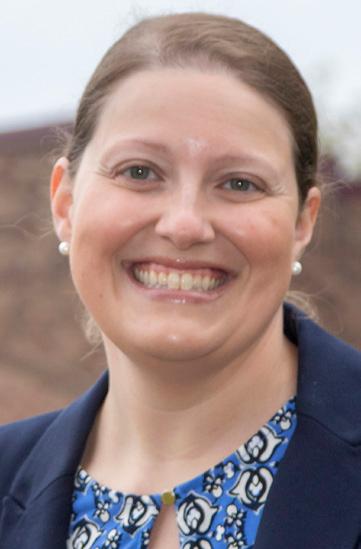
Alexander received his medical degree from the University at Buffalo and completed his training at Henry Ford Hospital in Detroit, Michigan.
director of social services and assis tant administrator of several skilled nursing facilities and rehabilitation centers. Hilgenberg earned her Master of Social Work from Syracuse University in 2011 and her Bachelor of Arts in sociology from the Univer sity of Richmond in Virginia.
As the executive director and administrator of both the 120-bed skilled nursing facility, The Manor, and Springside at Seneca Hill, an independent retirement community, Hilgenberg will be responsible for di rect oversight in ensuring the quality of resident care and services at both facilities.
Endoscopy Center included in Best Ambulatory Surgery Centers List
Endoscopy Center of CNY, part of Associated Gastroenterologists of CNY, PC, has been included on Newsweek’s list of America’s Best Ambulatory Surgery Centers 2023.
This prestigious award is pre sented by Newsweek and Statista Inc., the world-leading statistics portal and industry ranking provider. The awards list was announced in October and can currently be viewed on Newsweek’s website.
The America’s Best Ambulatory Surgery Centers 2023 list highlights the nation’s top ambulatory surgery centers based on quality of care, performance data and peer rec
ommendations, relative to in-state competition.
For the first time, ambulatory surgery centers from all US states were included in the survey. The 25 states with the most facilities accord ing to the U.S. Centers for Medicare & Medicaid Services (CMS) were sur veyed individually. The remaining states were grouped into 4 regions. ASCs from these states were consid ered accordingly.
“We have a wonderful team that is committed to providing excellent care in a friendly, safe atmosphere to our patients. Congratulations to the entire team at Endoscopy Center of CNY,” said Kimberlee Reed, adminis trator and director of nursing.
Endoscopy Center of CNY is located in the Northeast Medical Center, Fayetteville, and has served patients’ needs since 2010.
Nascentia ranks 31st as best place to work
Nascentia Health announced that the organization was nationally ranked No. 31 among healthcare providers and insurers in Modern Healthcare’s 2022 Best Places to Work award program.
This annual award program identifies and recognizes outstanding employers in the health care indus try nationwide. Modern Healthcare partners with the Best Companies Group on the assessment process, which includes an extensive employ ee survey. The complete list of this
December 2022 • IN GOOD HEALTH – CNY’s Healthcare Newspaper • Page 29 Health
News
Lisa White
Kristen Tyrrell
Leigh Hilgenberg
Stephen E. Pflanz
Daniel Alexander
Health News

year’s winner rankings is available at ModernHealthcare.com/bestplaces towork.
”I am so proud of what our staff has been able to accomplish this past year. What an honor it is to be among the top healthcare providers/insurers in the nation. We have been able to provide care where our patients want it most, in their homes. None of this would be possible without the per sonalized care of our devoted staff. We are excited to continue to hold ourselves to the highest standard of excellence while delivering excep tional care,” said Kate Rolf, president and CEO of Nascentia Health.
“The healthcare workforce has undergone a true test in the past year and a half, oftentimes pitting em ployees against employers. So how best to keep harmony in a workplace that is inherently stressful? This year’s winners have an easy tip to in corporate show respect. In high-per forming and successful teams, regard for employees’ well-being, acknowl edgment of their contributions, and deference to their experience and dedication all helped maintain pro fessionalism and productivity,” said Aurora Aguilar, editor of Modern Healthcare.
New mobile health services launched in Syracuse
Syracuse-based Drakos Clinical Laboratories in November launched its new medical service division, Mo
bile Integrated Health Services.
Mobile Integrated Health Ser vices will provide general wellness, flu shots and COVID-19 boosters, metabolic testing and analysis, hy dration support and fluid infusions (such as electrolytes and B vitamins), weight management, vitamin injec tions (such as B6, B9, B12, Glutathi one, LipoC and NAD injections), and acute illness services in the home, via telehealth, or at the office.
“We think about single parents who need someone to come to them, or senior citizens who rely on others for transportation, as well as anyone who needs medical care in the home because of the risk of exposure at the hospital,” said Drakos founder Heather Drake. “We’ll be open seven days a week, with emergency service available 24 hours a day.”
The leadership team includes physicians Norma Cooney and Derek Cooney, Drakos founder and critical care paramedic Heather Drake, as well as Drakos chief operating officer and former emergency department nurse Richard Nuzzo. The clinical team includes physicians, RNs, LPNs, laboratory technicians, respi ratory therapists, dieticians, aestheti cians, paramedics, physician associ ates, nurse practitioners and massage therapists.
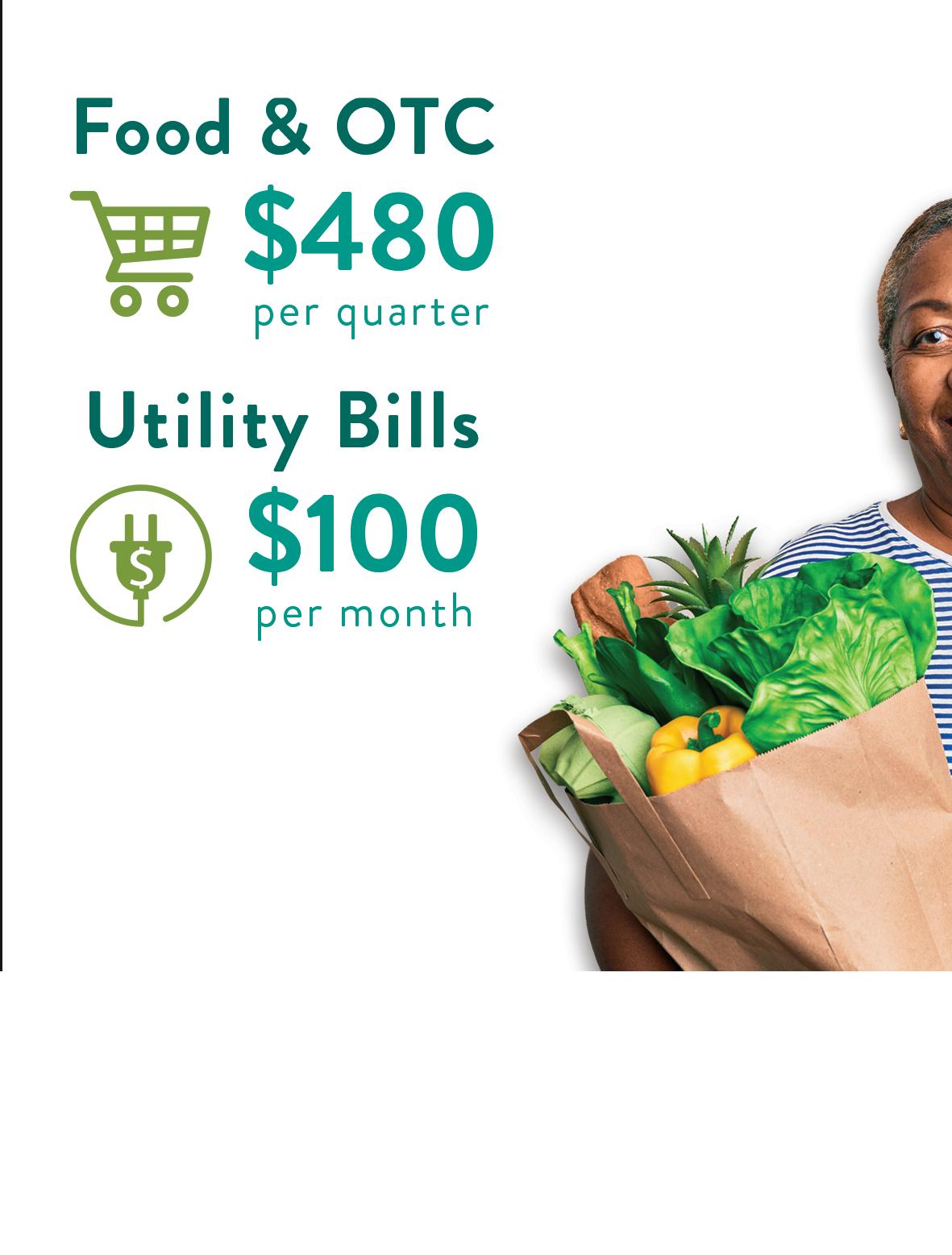














The company’s goal is for pa tients to never have to leave their homes, from scheduling an appoint ment and having lab work done, to seeing a physician and receiving evaluations. And to have all of this done in a timely manner.


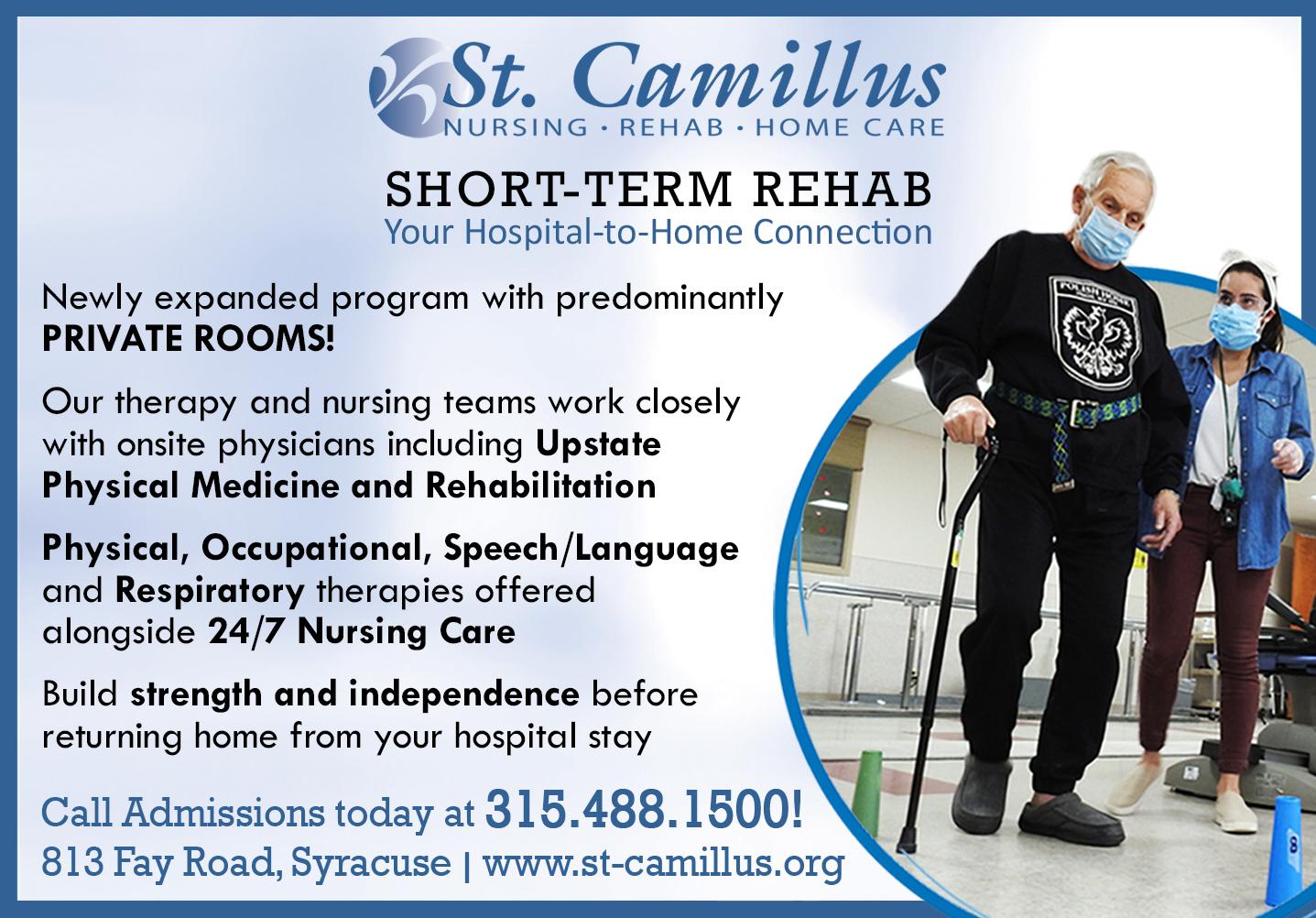
Page 30 • IN GOOD HEALTH – CNY’s Healthcare Newspaper • December 2022
SIMEON DEWITT 150 E. 1st St. Oswego, NY 13126 315-343-0440 TOWPATH TOWERS 100 Rochester St. Fulton, NY 13069 315-598-4700 SPRINGBROOK APARTMENTS 4920 N. Jefferson St. Pulaski, NY 13142 315-298-6101 SENIOR CITIZEN HOUSING The following services are included in your rent • Trash Collection • Free Wi-Fi • Bus for shopping/groceries • Heat, Electricity & Hot Water • Snow Removal & Lawn Care • Planned Activities • All repairs & maintenance Applications are now being accepted! 62+ No smoking! Preference given for veterans & spouses of veterans. Equal Housing Opportunity Supervised by NYS DHCR Don't miss the next issue of In Good Health Women's Health Special 315-402-3370 315-592-1531 To advertise call Amy Gagliano Cassandra Lawson In Good Health CNY’S HEALTHCARE NEWSPAPER Reach Over 100,000 Health Consumer and Providers ADVERTISE
Cancer.


It can drain you mentally, physically, emotionally.
You may feel alone. Isolated. But you’re not.
At the Upstate Cancer Center, you have a team, of doctors, nurses and many others. All working for you, all standing with you, throughout your cancer treatment experience. We’re the Upstate Cancer Center. And we’re here for you
SOME OF THE HEADLINES
New life for Congressman John Katko.
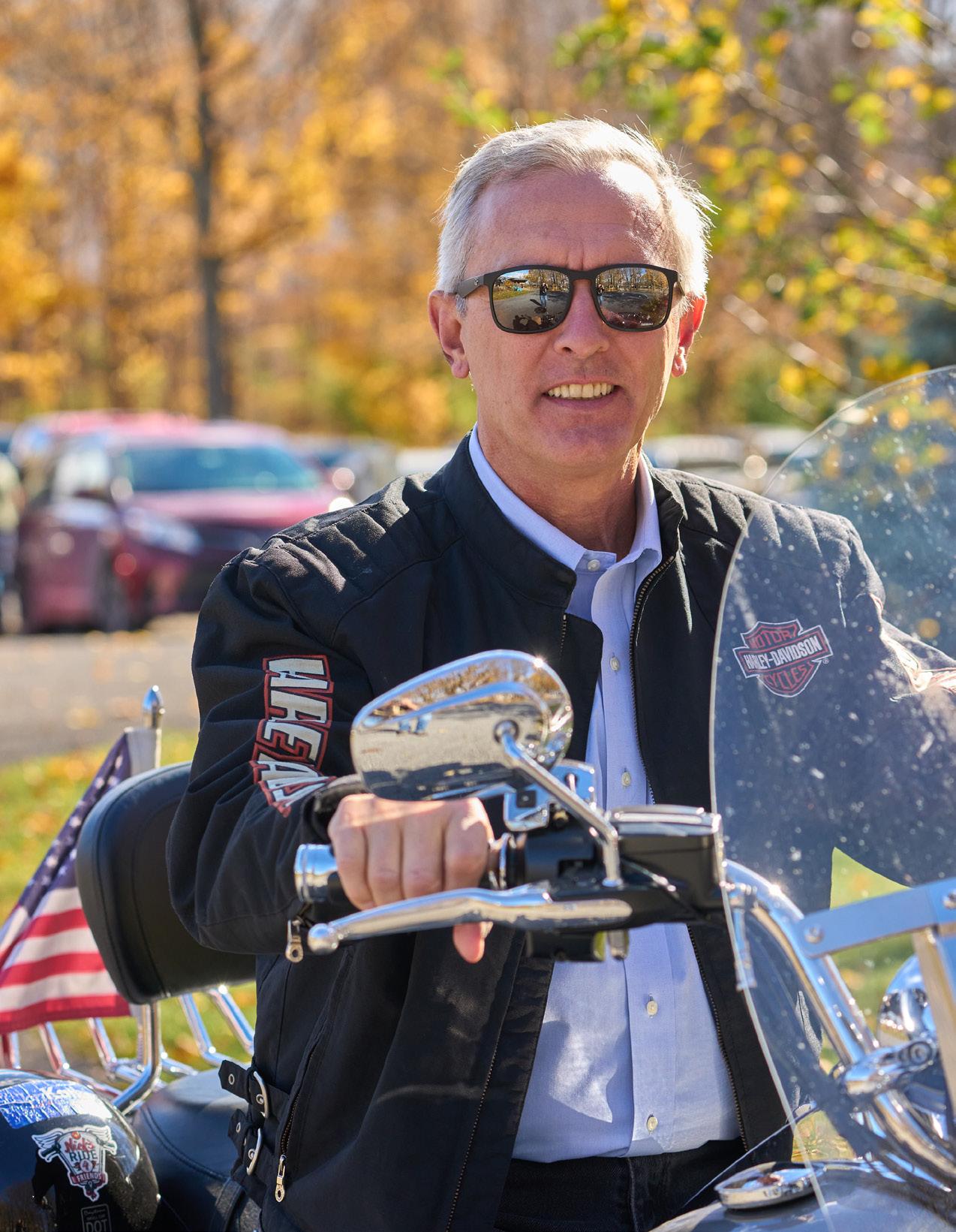

When should you claim Social Security benefits?
Knitting: music for the soul. Meet the local pros.
Blacklights: old school band plays on
Former ‘New Times’ publisher Art Zimmer — remember him? — still has many irons in the fire
Bill Knowlton: bluegrass in his blood
New life for Congressman John Katko
Fulton author writes about snowstoms
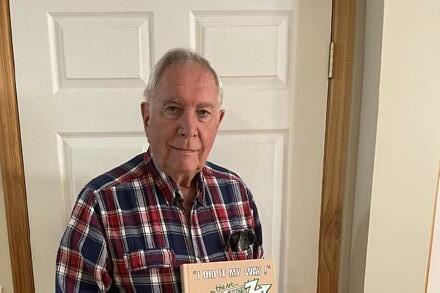
December 2022 • IN GOOD HEALTH – CNY’s Healthcare Newspaper • Page 31
Don’t Miss the Latest Issue of 55 Plus ! Issue 102 December 2022 / January 2023 For Active Adults in Central New York cny55.com NEW LIFE
— and what’s next for him P. 32 SURE BET: 8 PURCHASES RETIREES ALMOST ALWAYS FORMER SYRACUSE NEW TIMES PUBLISHER ART ZIMMER STILL GOING... AND GOING P. 44 COVER FINAL-FINAL.indd 1 11/23/22 7:09 AM
Congressman
John Katko discusses bipartisanship, leaving Congress, his relationship with former president Donald Trump
•
•
•
NAME ADDRESS CITY/TOWN STATE ZIP 1 YEAR (12 ISSUES) $21.00 $35.00 2 YEARS (24 ISSUES) 4 Riverside Dr., Ste. 251, Utica, NY 13502 Hello. I’d like to subscribe to 55 Plus, the only magazine celebrating life after 55 in Central
York, and have it delivered to my door. Payment is enclosed. Offer valid through August 2022. Offer subject to change without notice. First issue mails within 3 to 6 weeks. 55 Plus is published bi-monthly by Local News, Inc.. Find us online at cny55.com. And much more
•
•
•
•
•
New


Page 32 • Acupuncture Center USA 7th Generation Rui Wang, LLC Northeast Medical Center, Suite 209 4000 Medical Center Dr., Fayetteville, NY 13066 Tel1: 585-358-6186; Tel2: 315-378-5556; Tel3: 607-372-2082 Ancient Wisdom Integrated with Modern Medicine LIFE CHANGING MEDICINE, MOVING MEDICINE FORWARD ONE OF THE BEST ACUPUNCTURE CENTERS IN THE WORLD Acupuncture is a general practice alternative medicine, it can help a wide range of health problems at different extents. Ask for professional, confidential, personalized evaluation / consultation appointment before starting any treatment Balance Immune System Build Stronger Immunity www.AcupunctureCenterUSA.com 7th Generation Medical Acupuncture Rui Wang, MD of China, L.Ac. Featuring RUI Anti-Inflammatory Acupuncture, Medical Oncology Acupuncture, and Neuromedicine Acupuncture Experienced in both Western Medicine & Traditional Chinese Medicine Experienced in both Academic & Private Practice Experienced in both Basic Science & Clinical Science Experienced in Cancer Research at Major Medical Centers in USA THE WORLD’S GREATEST TREASURE OF MEDICINE 靈樞抗癌 7th Generation Medical Oncology Acupuncture for Cancer Care, Cancer Survivor Care, and Cancer Prevention Part of Comprehensive Cancer Care Build Anti-cancer Immunity, Improve Cancer Immune Surveillance Ability; Relieves Cancer Complications and Cancer Treatment Induced Side Effects; Drug-Free Care without Drug Interactions with Conventional Cancer Treatment; Personalized Cancer Supportive Care, Integrative Cancer Care. *Do Not Stop Your Conventional Western Medicine Cancer Care during the Acupuncture Care, since Medical Oncology Acupuncture Is Only Part of Comprehensive Cancer Care.




































































































 By David Figura
By David Figura























































 — Paranoid Patty
— Paranoid Patty
 By Kimberly Townsend
By Kimberly Townsend































